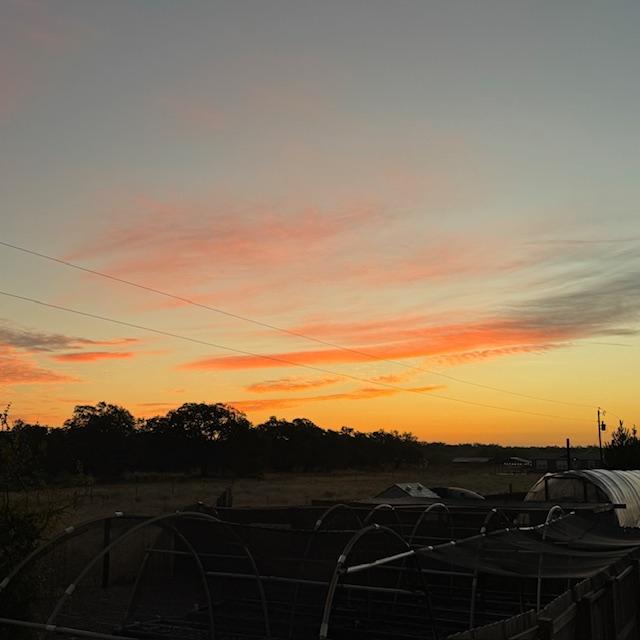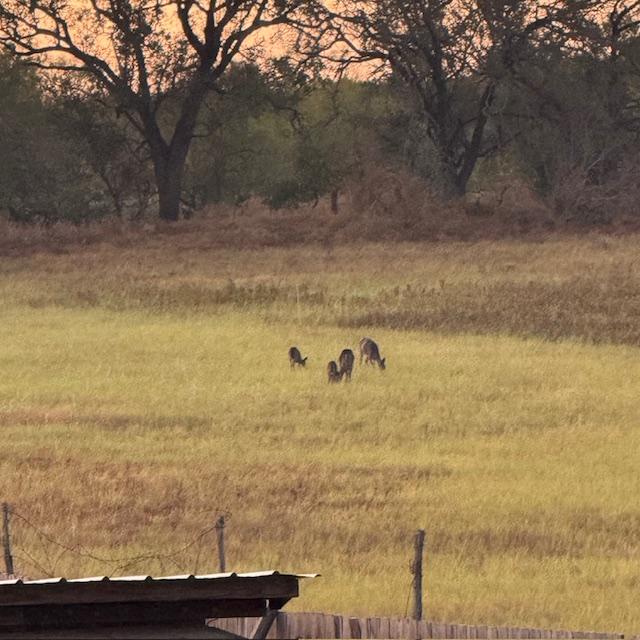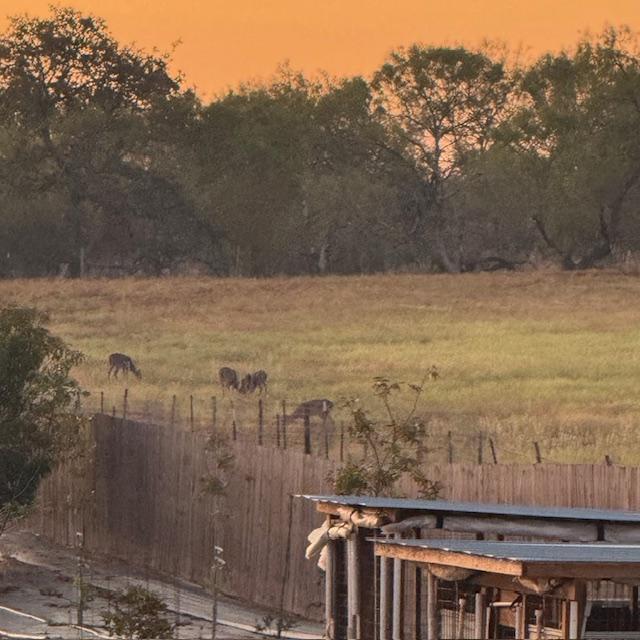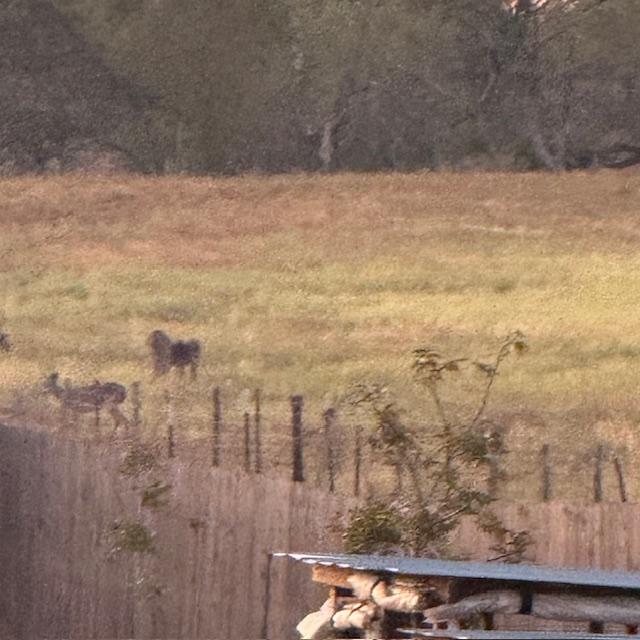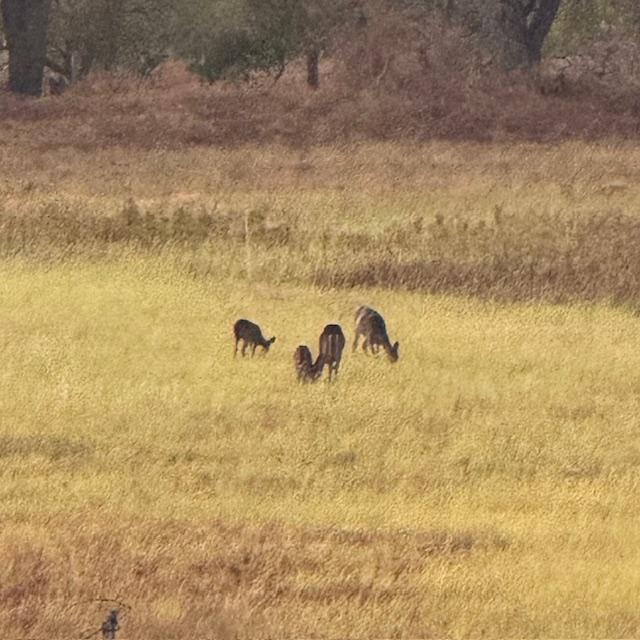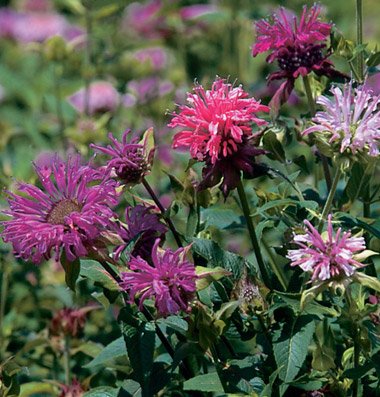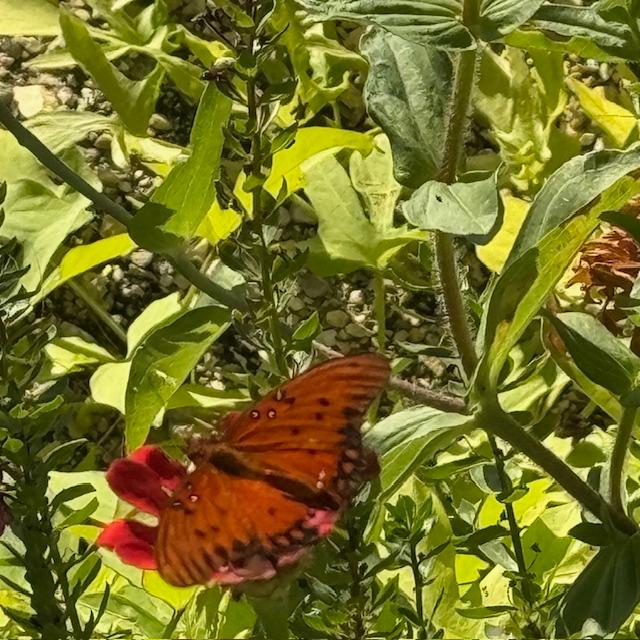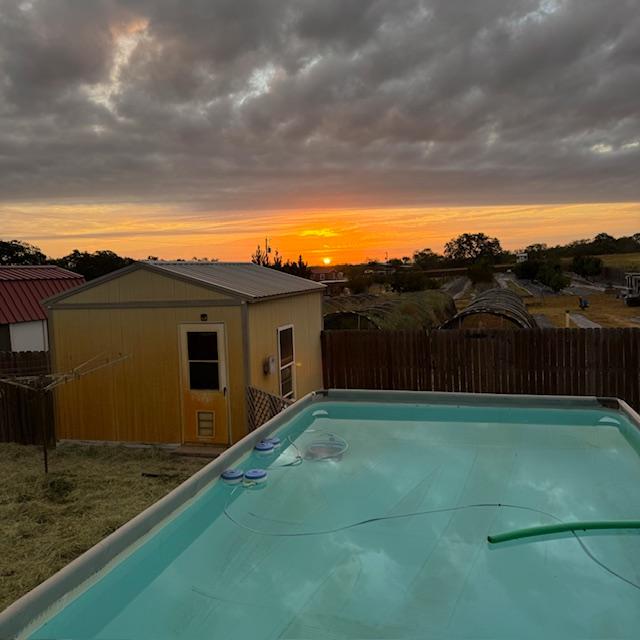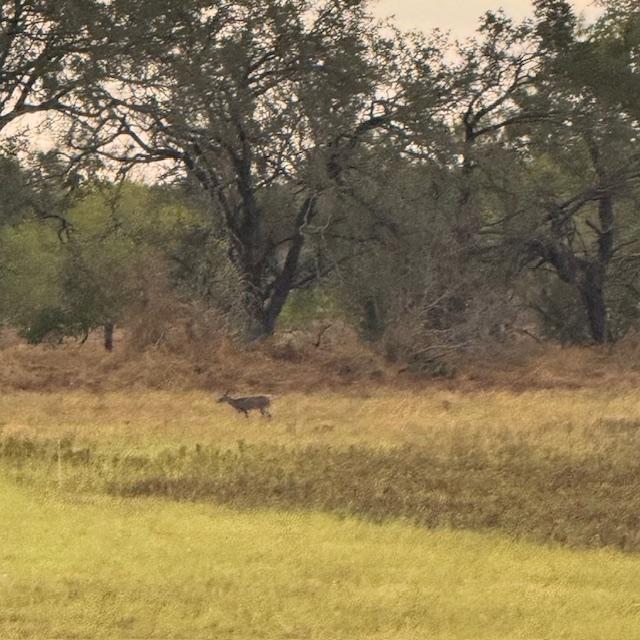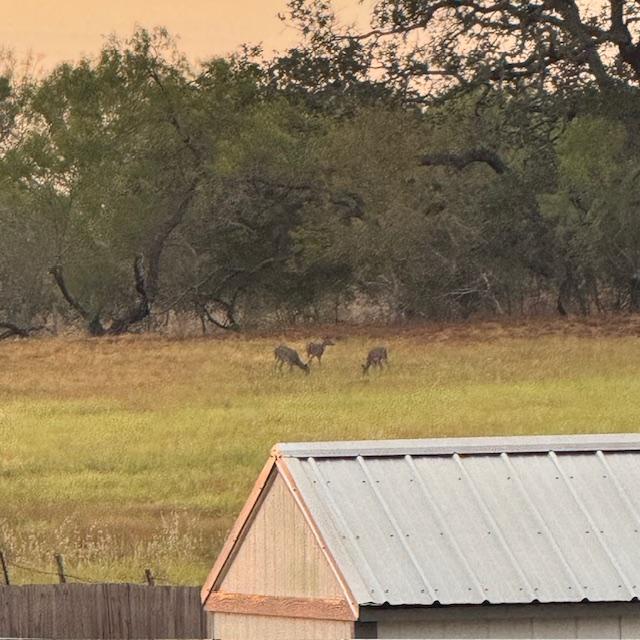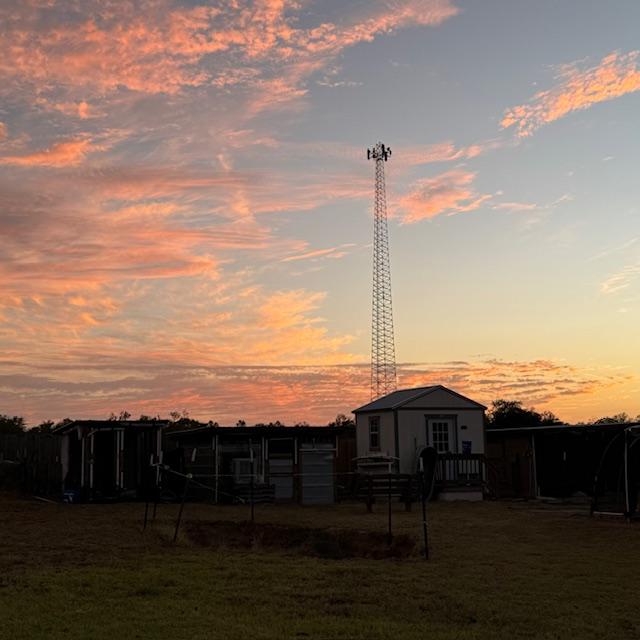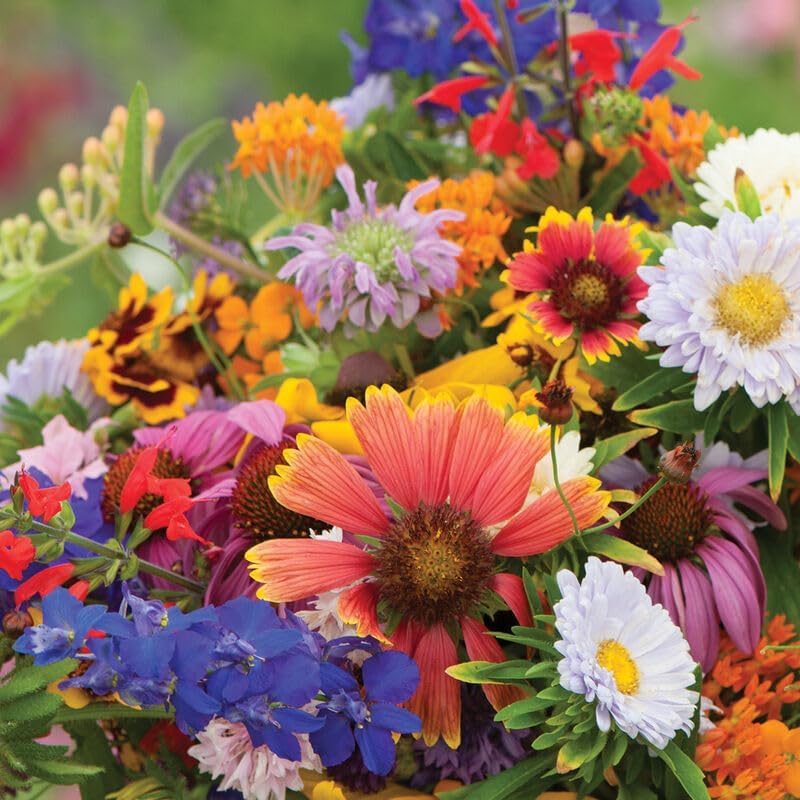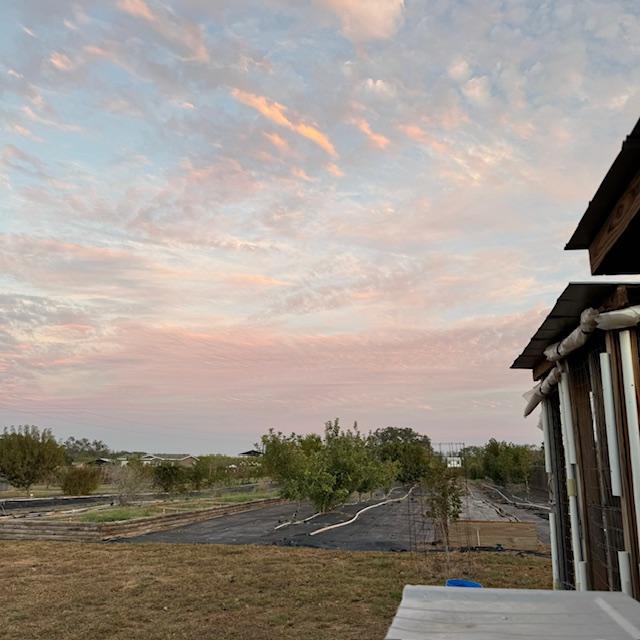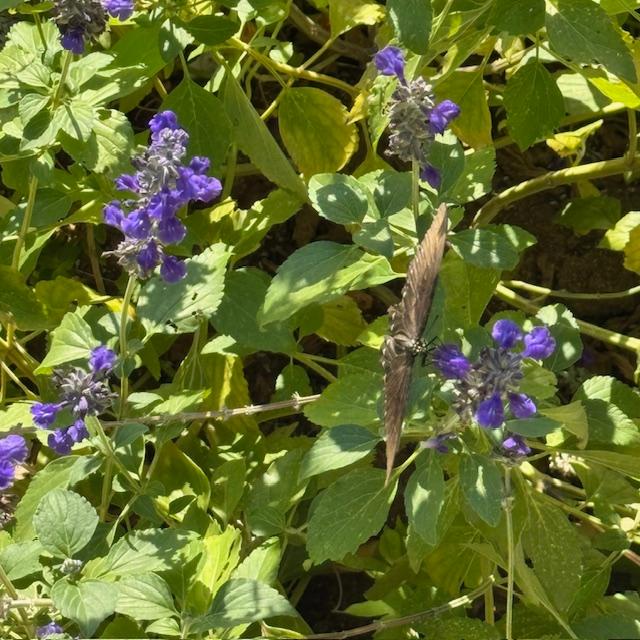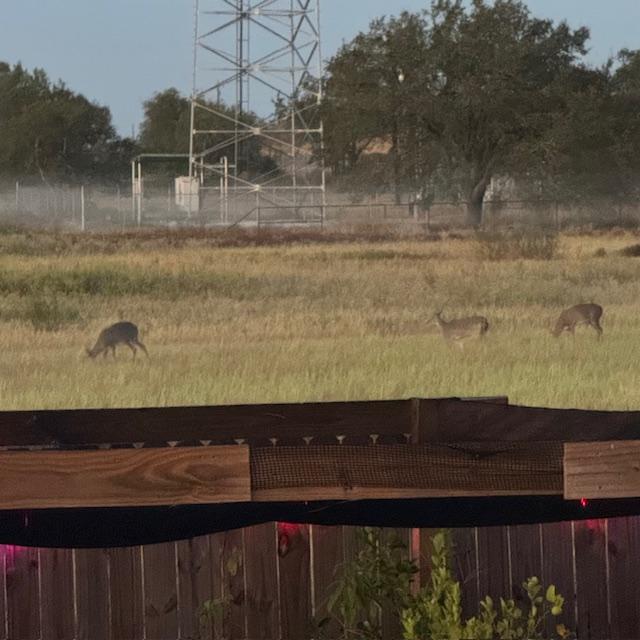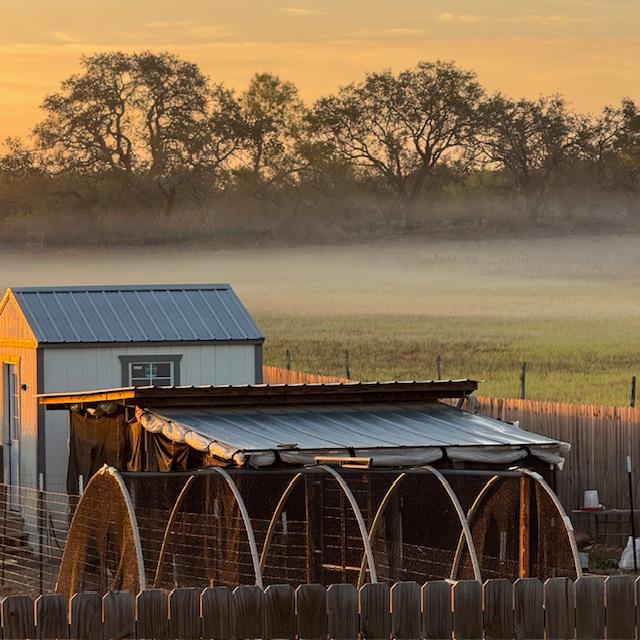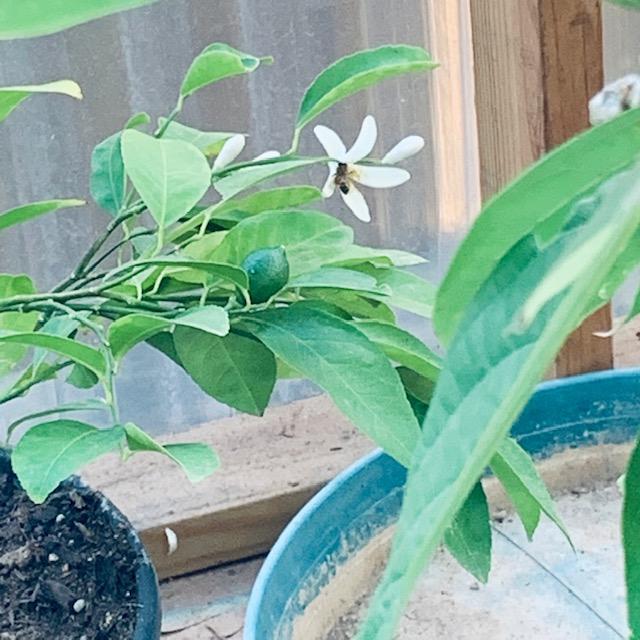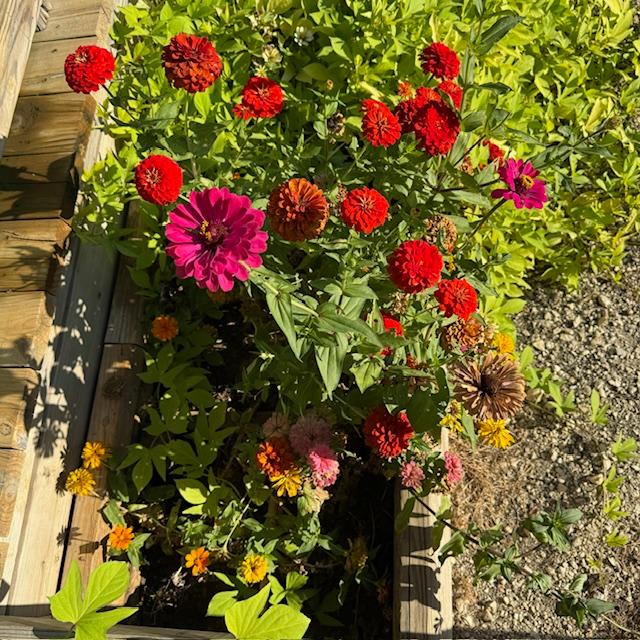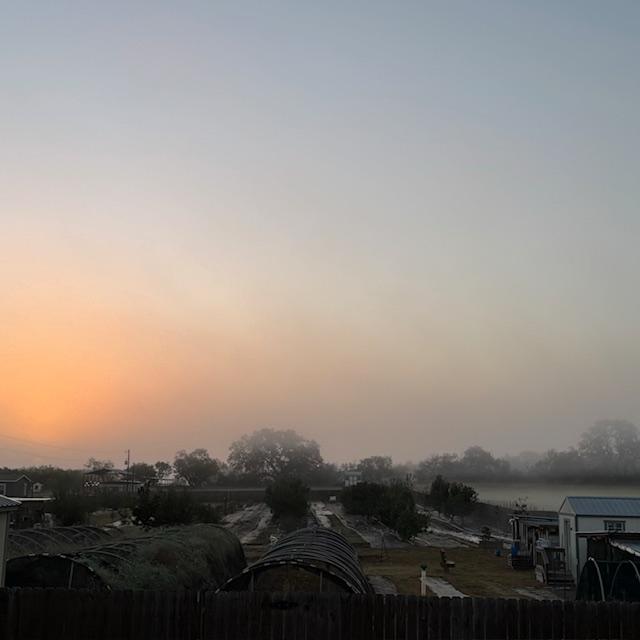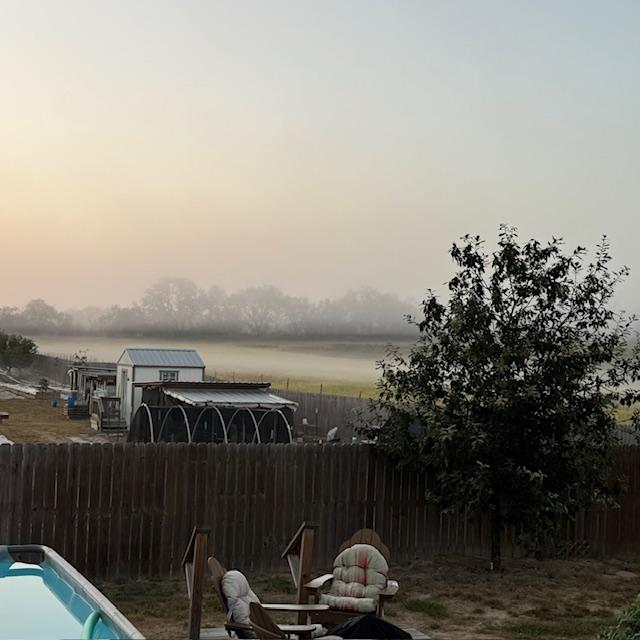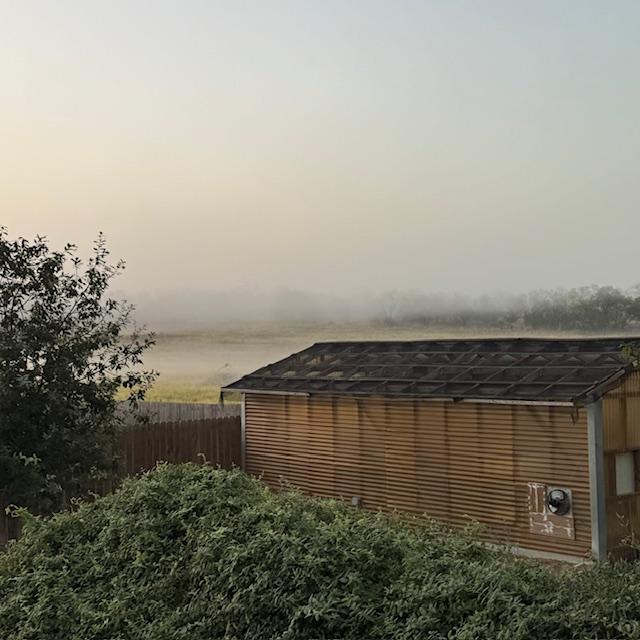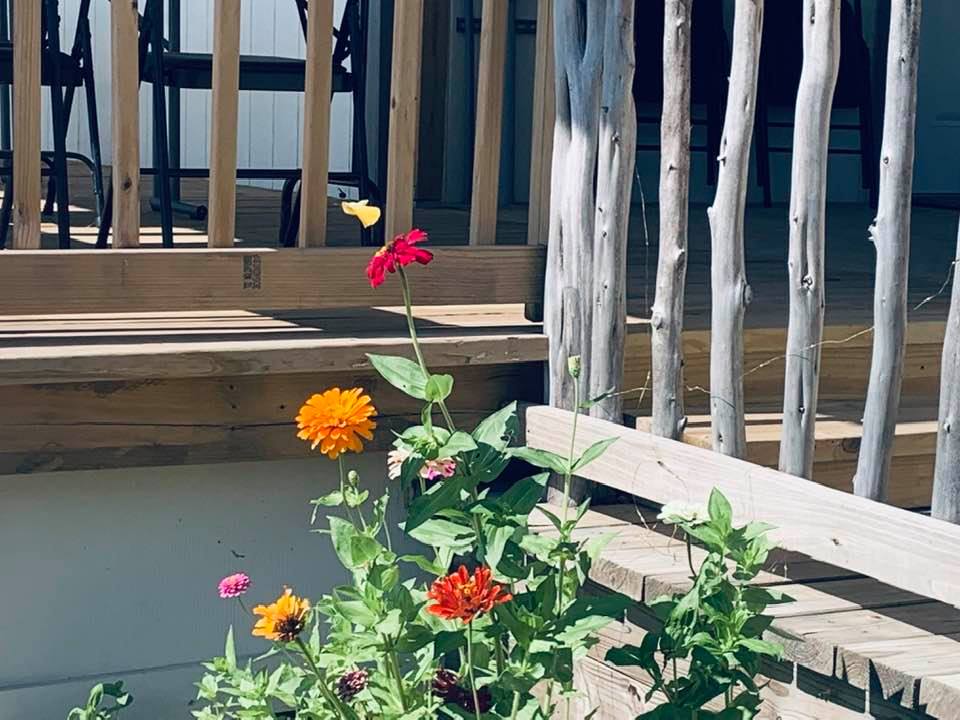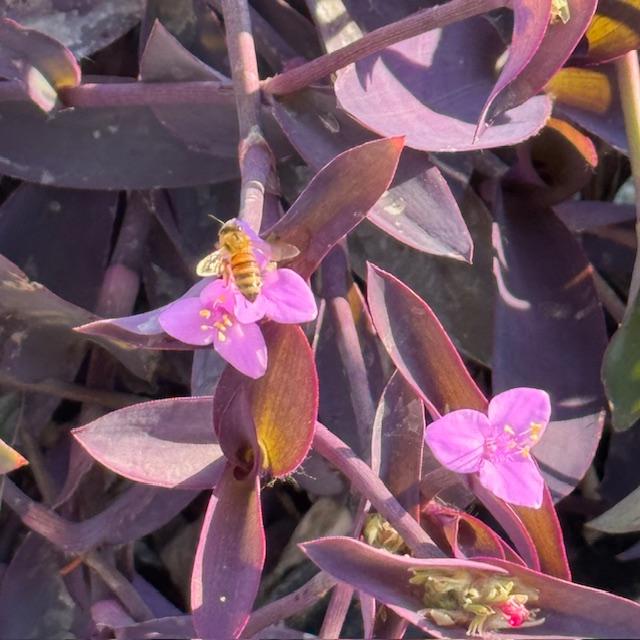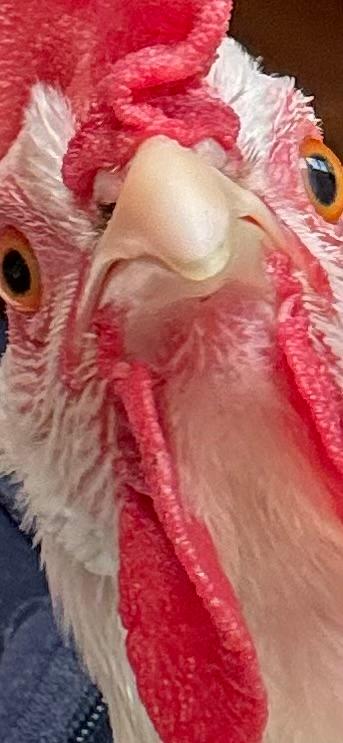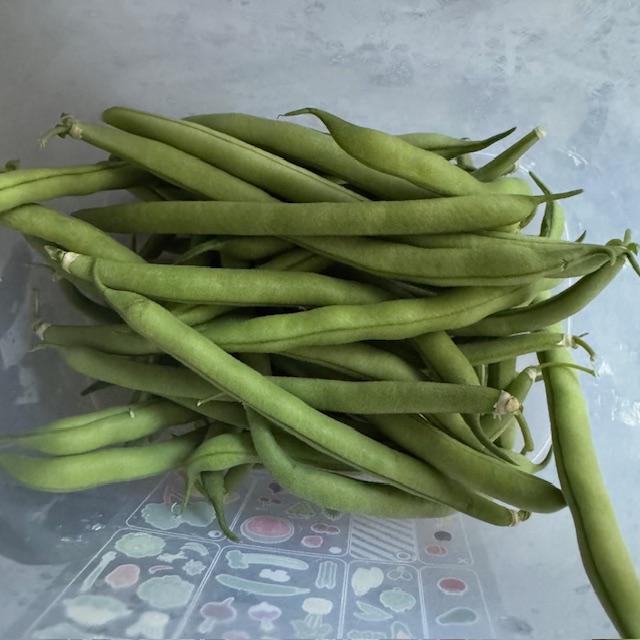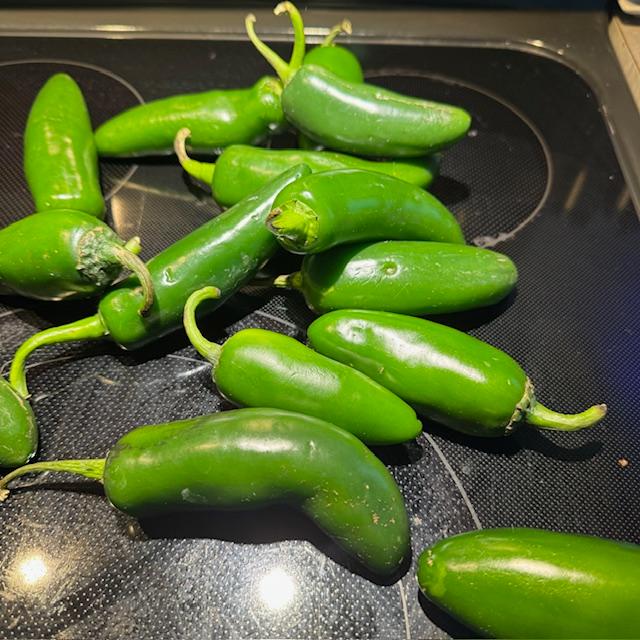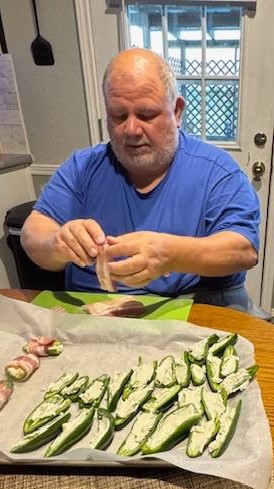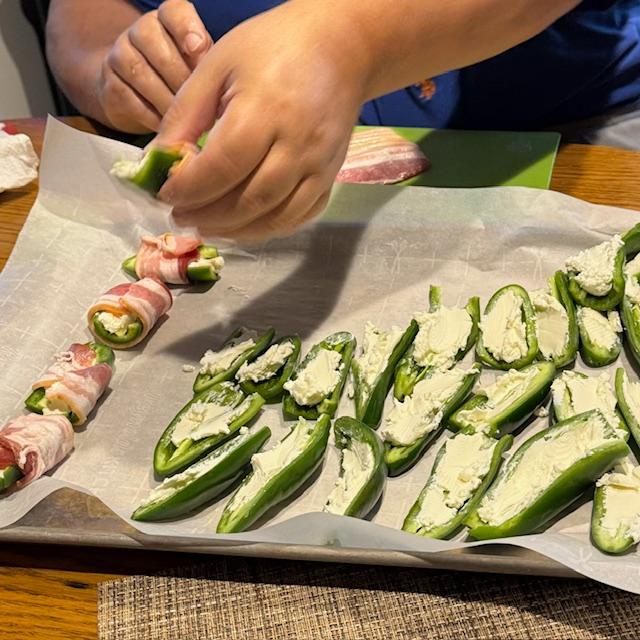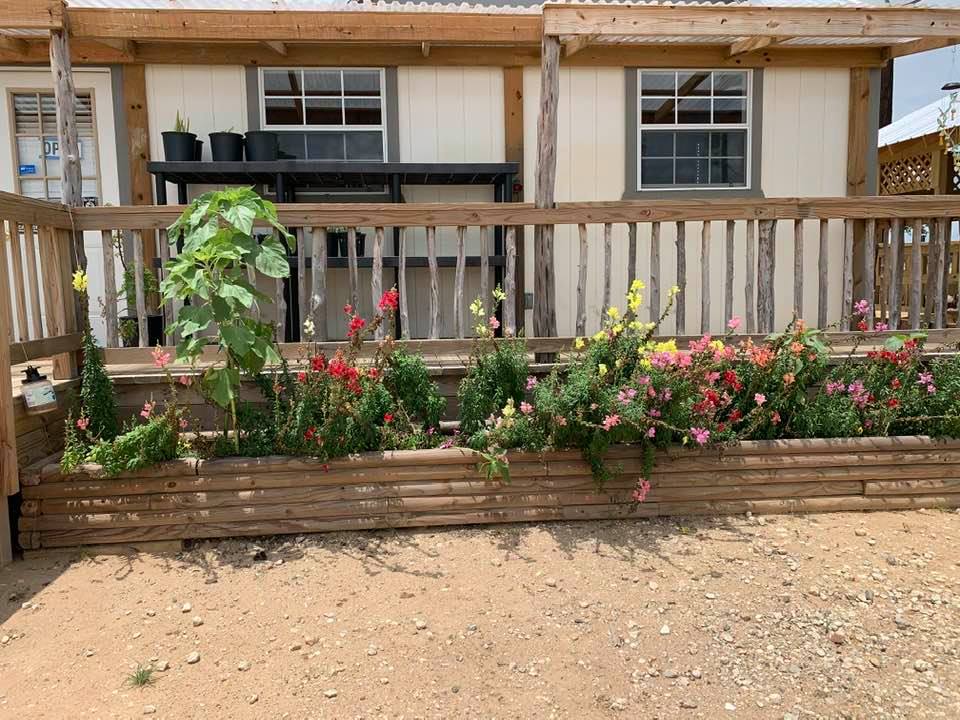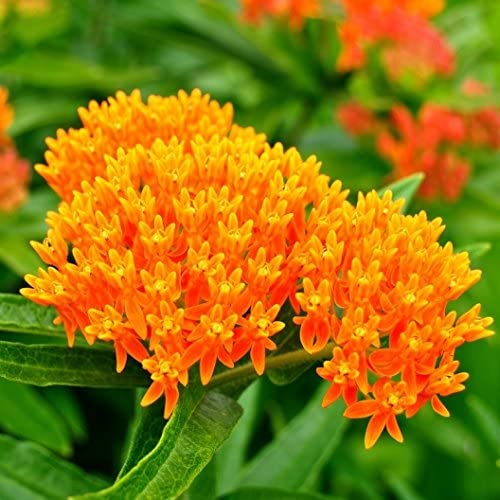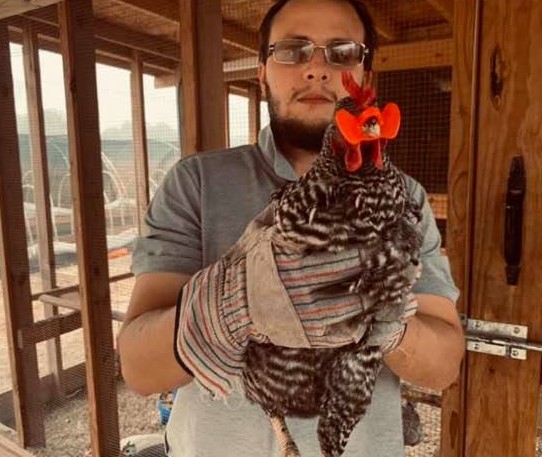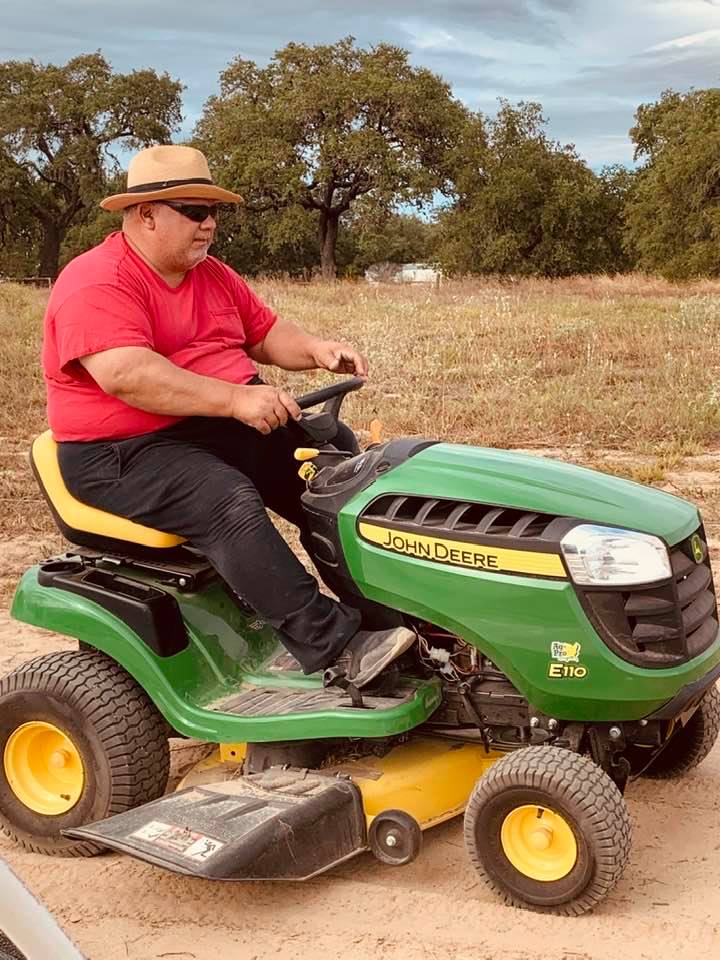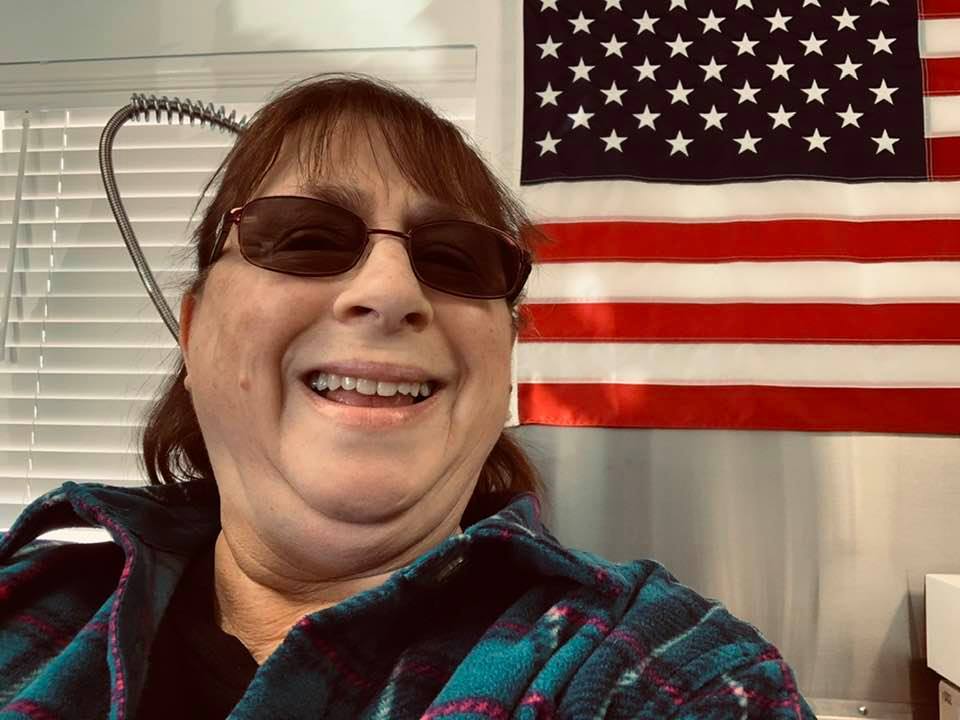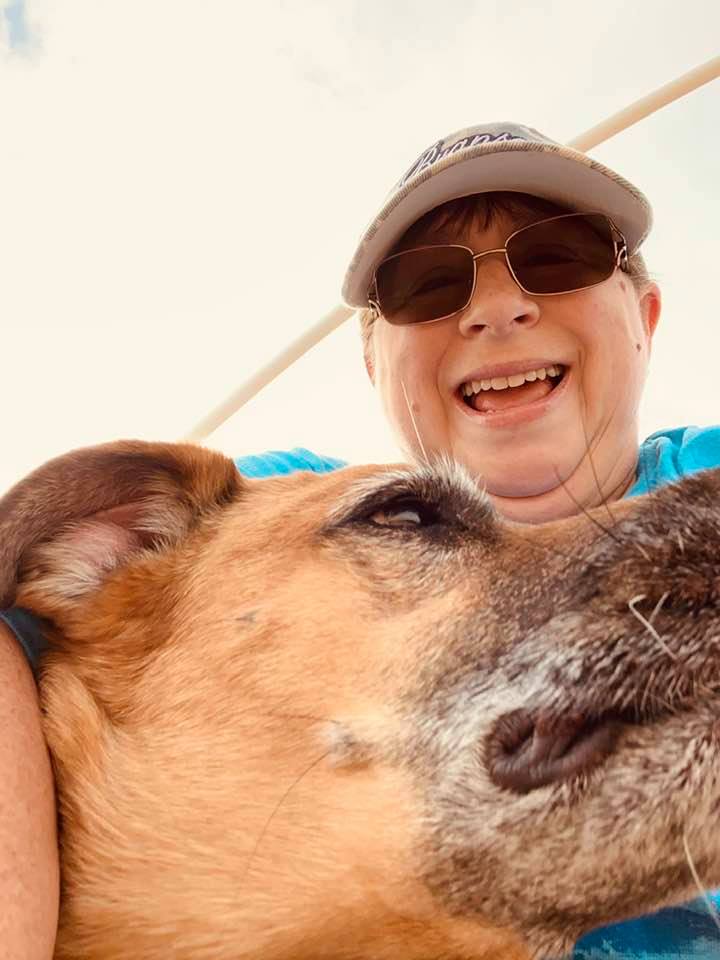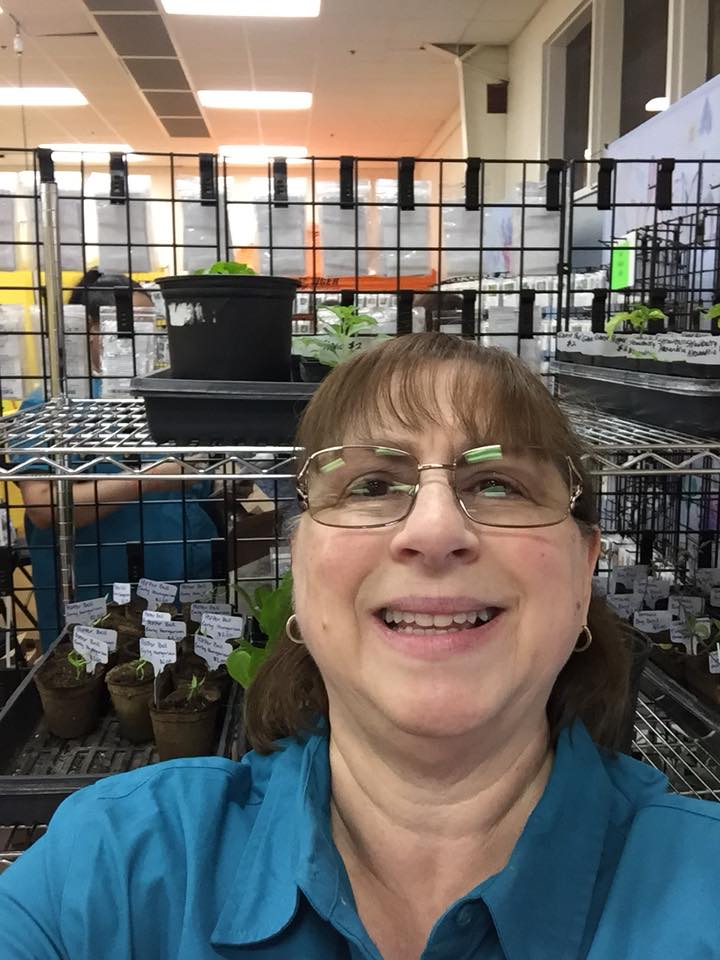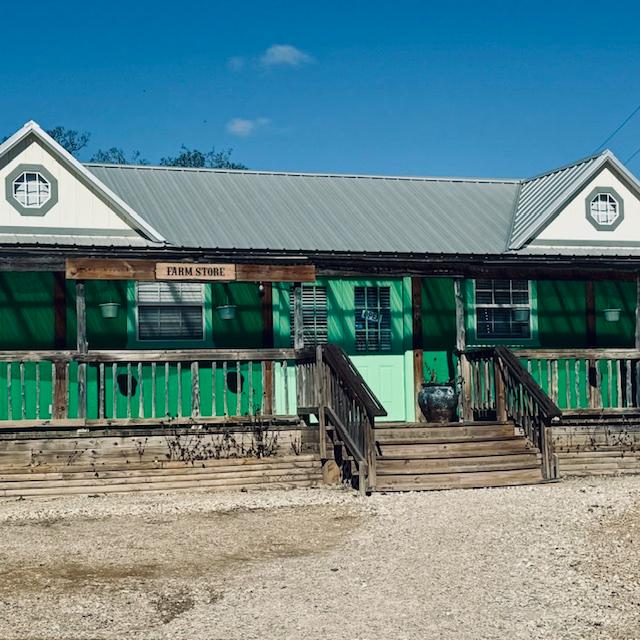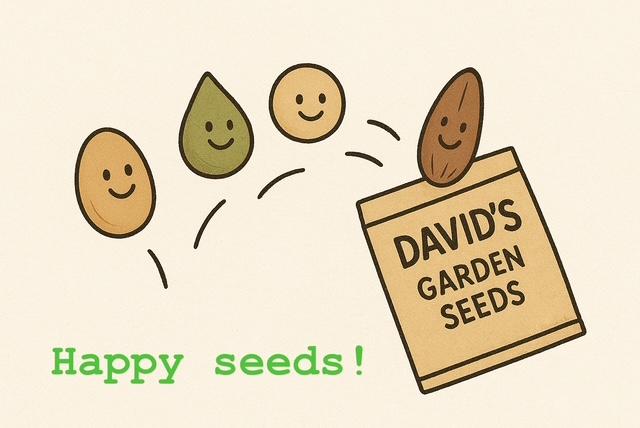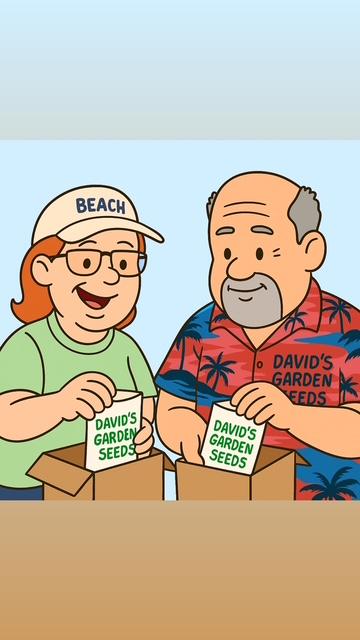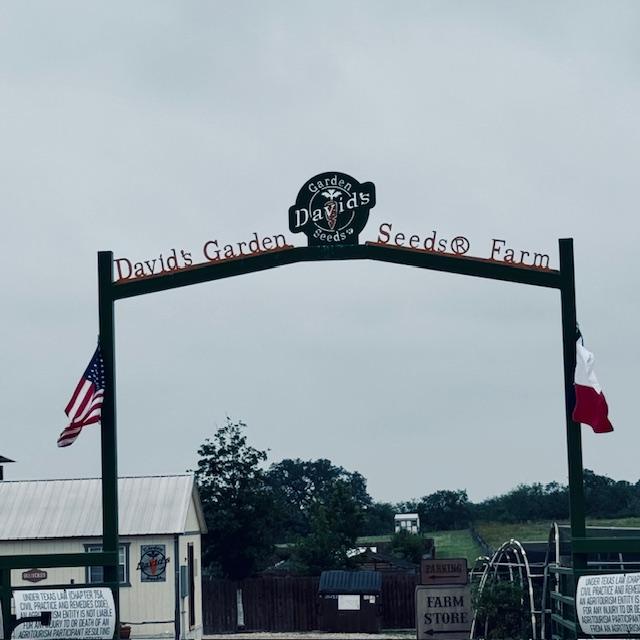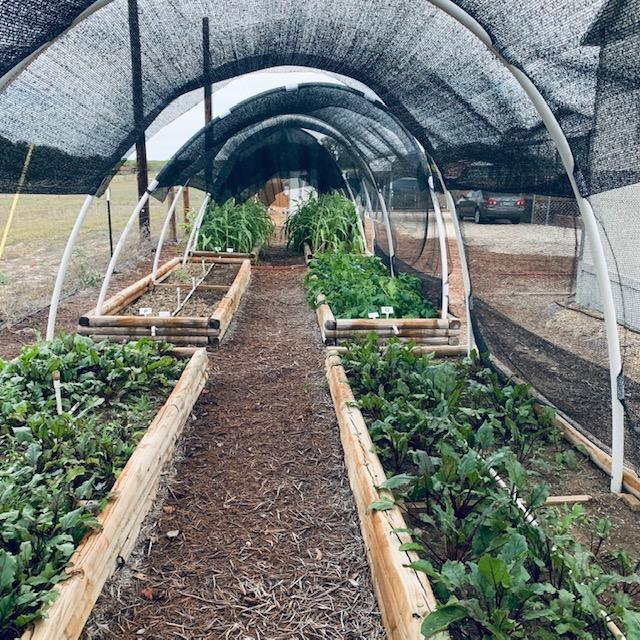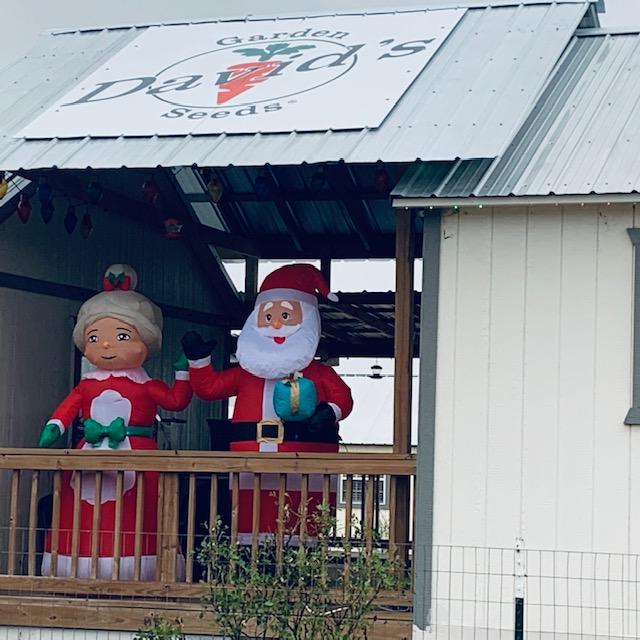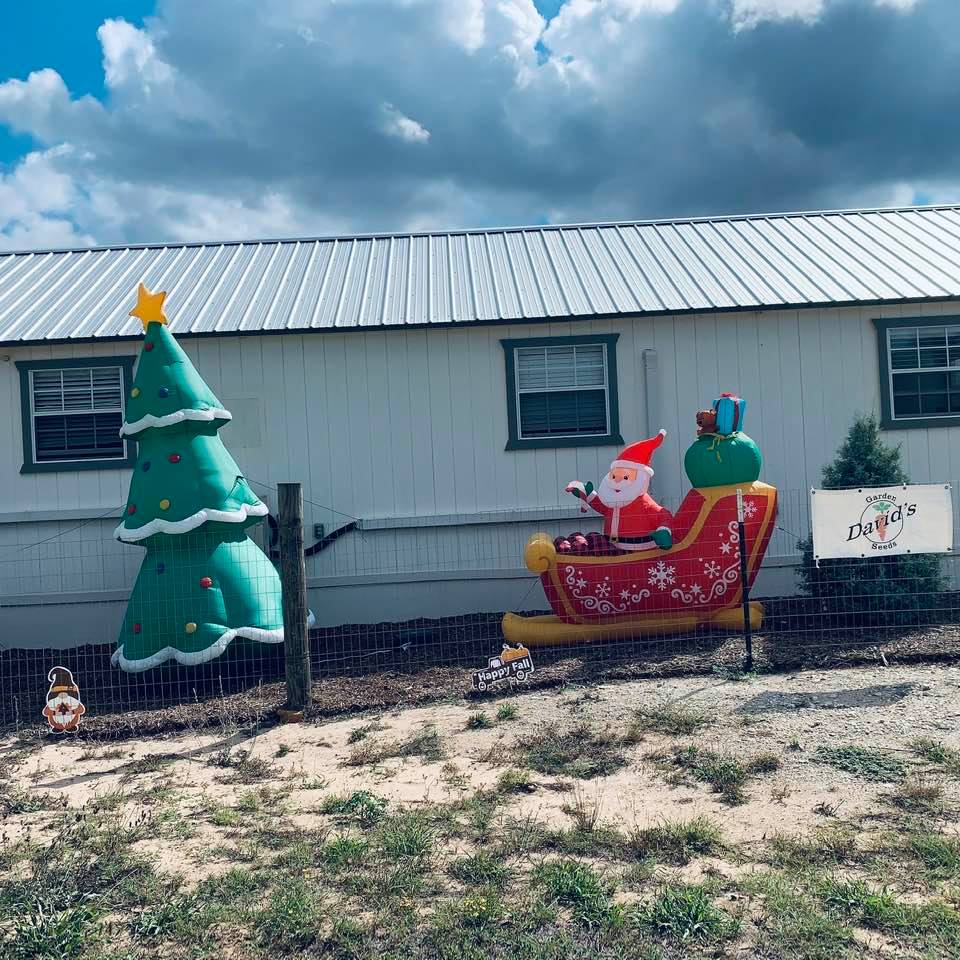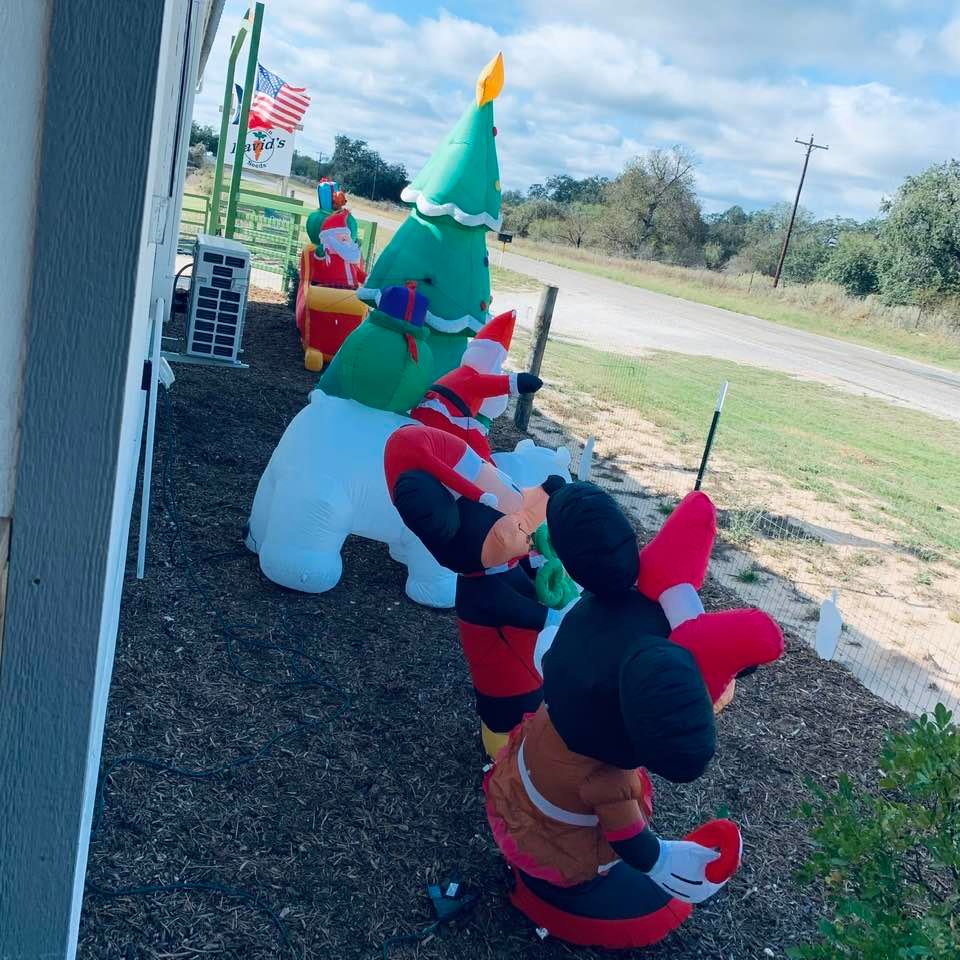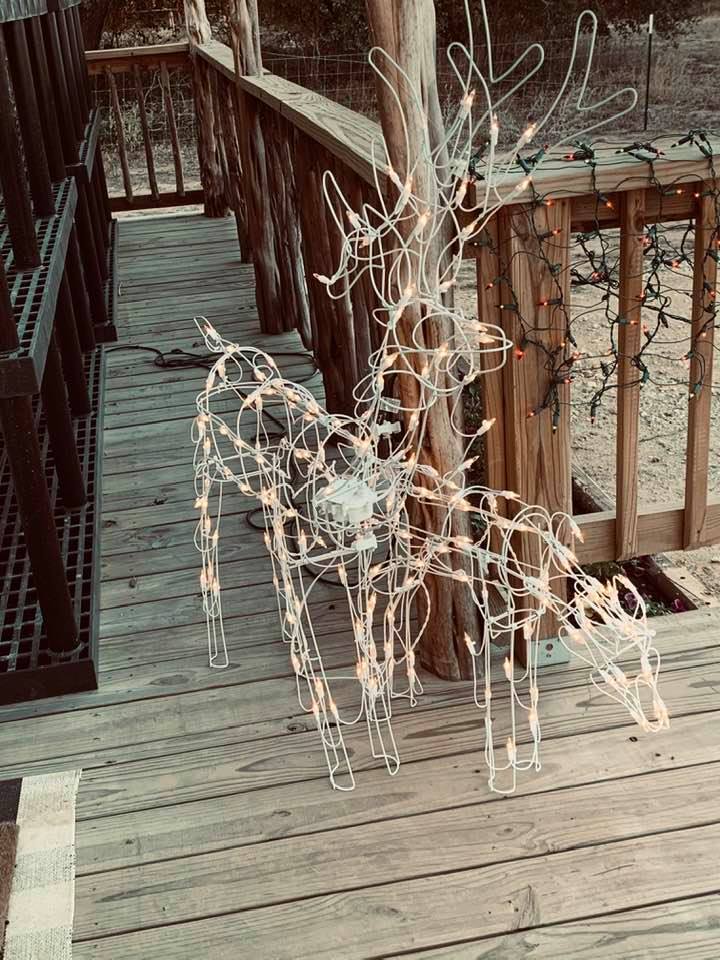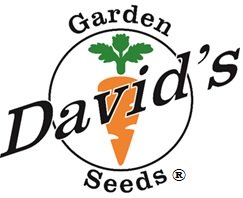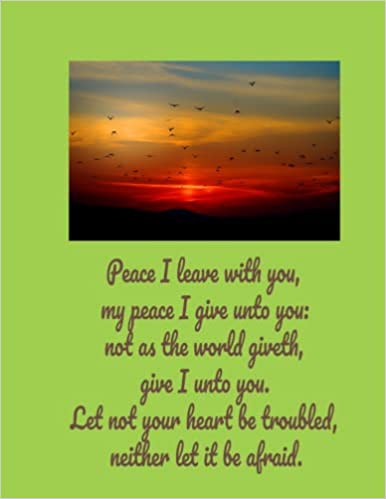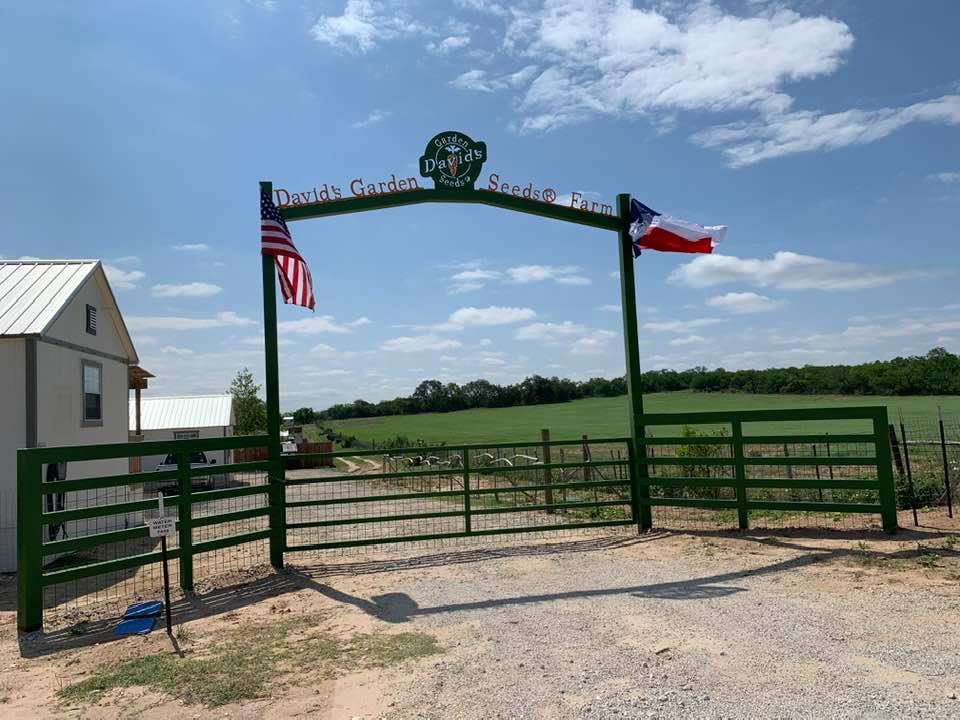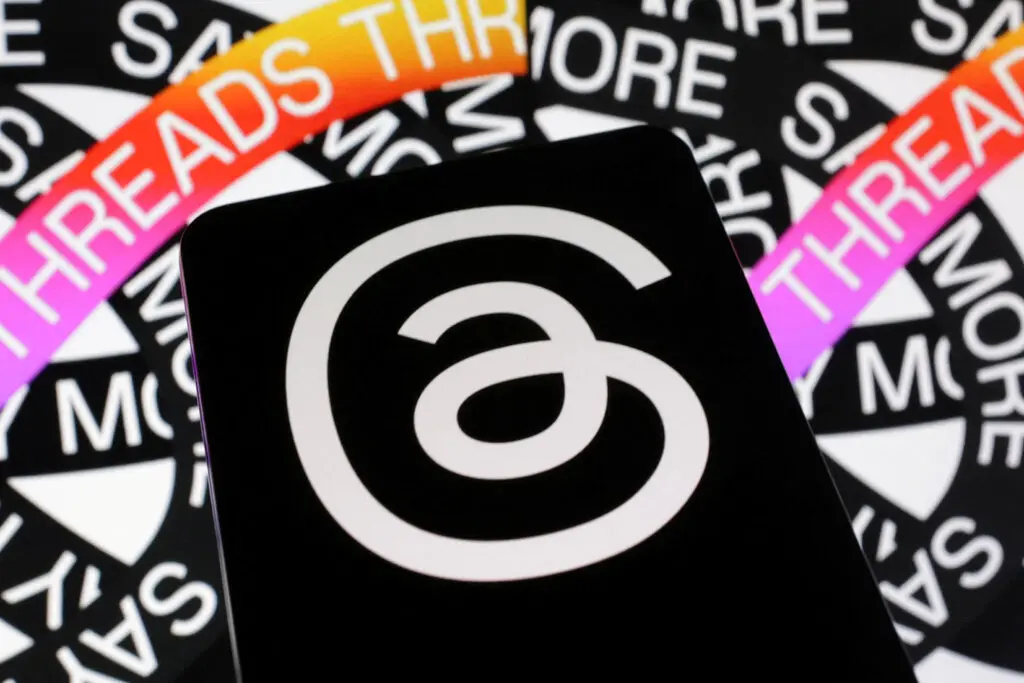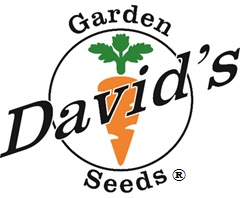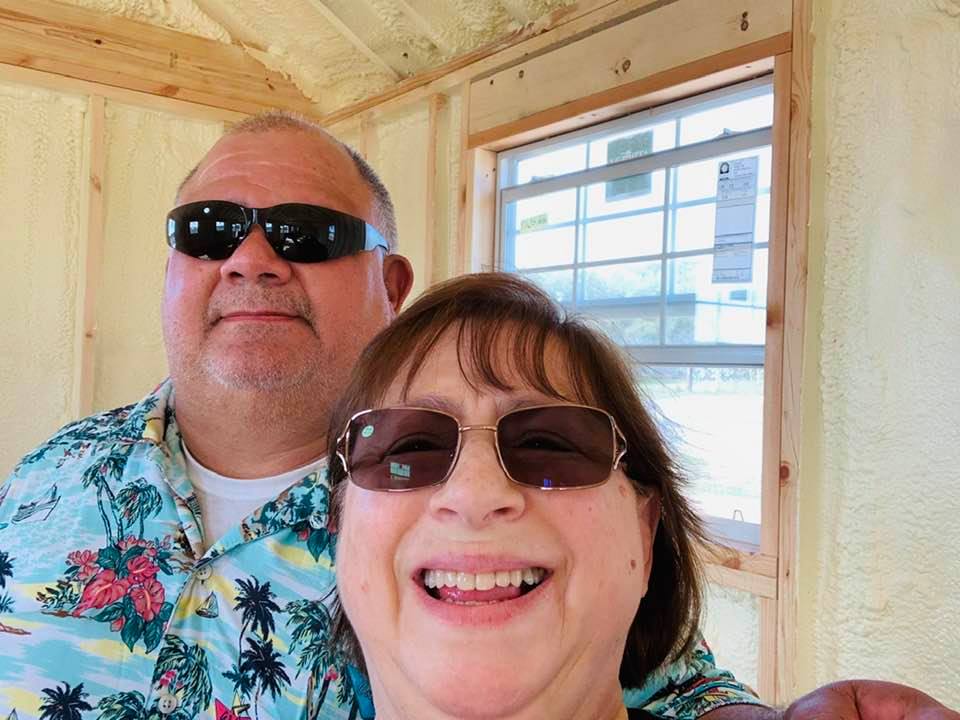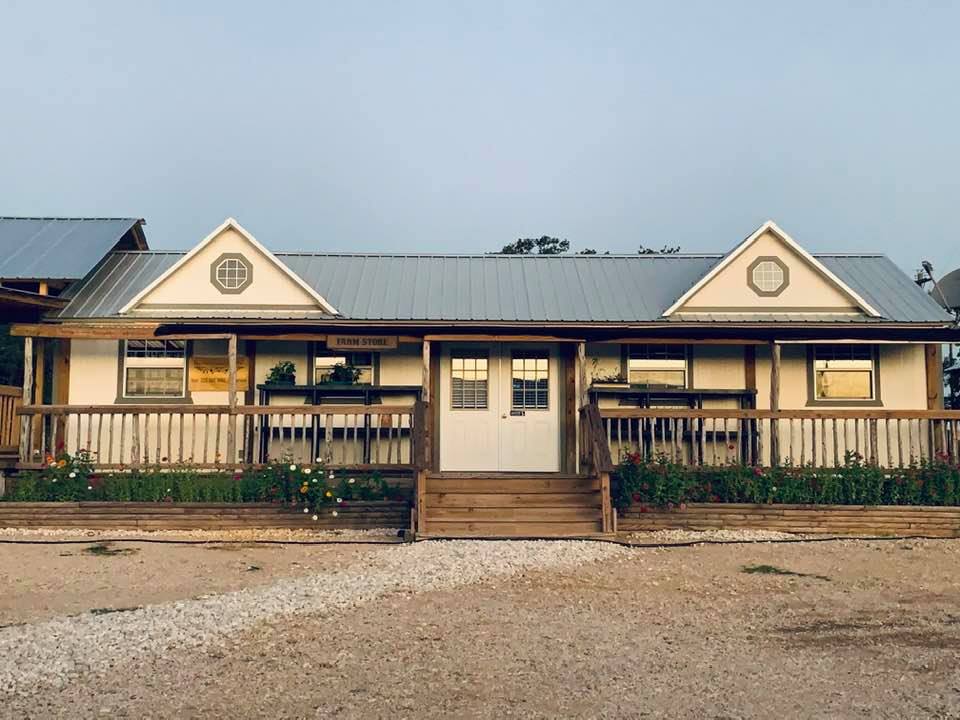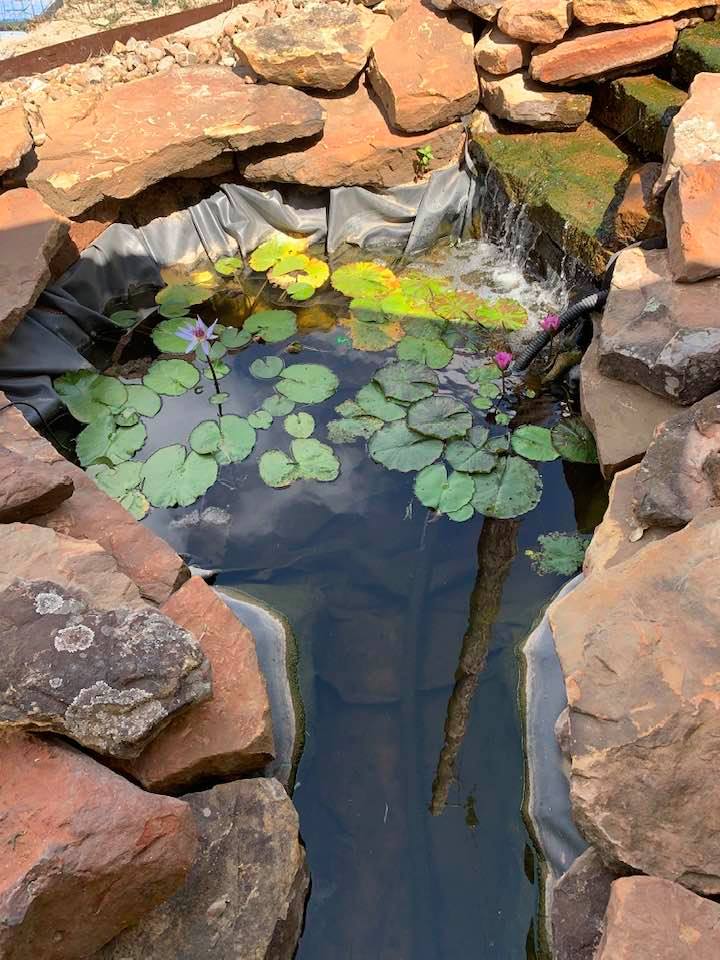Pollinator Garden
You need a pollinator garden if you want to attract butterflies, hummingbirds, bees and other helpful gardening insects.
Welcome to the delightful world of bringing pollinators into your garden! Picture this: vibrant butterflies fluttering about, bees buzzing with purpose, and your garden bursting with life. Today, we’re embarking on an exciting journey to explore how to build a pollinator garden that attracts these valuable creatures, enhancing not only your plants' health but also the local ecosystem.
So, why a pollinator garden, you ask? Because it provides essential foods for the bees and butterflies who pollinate your plants so you get lots of good things to eat! Be sure to plant a lot of flowers—like daisies, lavender, lilacs, zinnias, and honeysuckle. It's a win-win for both your garden and the environment. Pollinators, like bees and butterflies, play a crucial role in fertilizing plants, leading to better growth and more flowers and fruits. By learning how to build a pollinator garden, you're also supporting biodiversity and helping combat the decline of these essential species.
Pollinator Garden - 10/21-10/27/2024
Monday, October 21, 2024
Good morning! It is hard to believe the weekend is gone again and another busy work week is here. As the sun was coming up, David noticed a big group of deer over on our new property. This past Friday, David drove the truck and Matt sat in the back, tossing wildflower seed all over the field because October is wildflower planting season. Normally, we say to cover the seed with dirt but this is a huge space and no one has time for that. So the deer are out there enjoying breakfast on us!
Politics And Seeds
It is now 11am. David received an email from a male customer this morning that was addressed to me. He put "Ethical sale?" He is demanding to know who I am voting for as he is making a seed order but he said that before he completes it, he needs to know. If I am voting for Trump, he says he will no longer do business with us. Then he goes on to degrade Trump. After that, he tells me it is not any of his business and that I can vote for whoever I want to but that if it is Trump, he will not order our seeds.
David gave him a good reply, telling him that he was dealing with David and not me. Then he went on to explain some of the differences between the two candidates and finally said we are voting for the one who is not for abortion.
David sent the whole email mess to me. I noticed right away that it was addressed to me, not David. First of all, why is it that so many people don't mind saying ugly things to me but they don't have the balls to say things like that to David? Secondly, it is nobody's business who I vote for because we live in the United States of America and I can vote for whomever I want to vote for. Is this man emailing the wives of all owners of seed companies in the United States to see who they are voting for?
If you don't like it, buy your seeds at Walmart or the Dollar Tree. I am not going to change my beliefs to get a seed order. This is utterly ridiculous. Make sure that you also ask the wives of everyone else you are doing business with--your water company, your electric company, your gas company, your internet provider, the gas station owner, your grocery store owner, your pharmacy owner, your barber/beautician, and everyone else you pay money to. Don't forget to ask your banker, your mortgage lender, your car dealer and anyone else you have business dealings with who their wives are voting for. Why would you care?
This is the United States of America and I can have my opinion and beliefs and you can have your opinion and beliefs. I will do business with everyone. If you don't want to do business with us because of politics, that is okay.
Before customers buy from us, I don't ask them who they are voting for. I simply ring up their purchases and bag their orders.
It shouldn't
matter who I vote for but if it does, that is fine. I am sure there are seed companies with owners and workers who believe the way you believe. Don't
bother me with your political views and try to force them on me. I am 64
years old and I will vote for whoever I want to vote for. So that is that. And then there is this:
And this:
And this...
And this:
See the difference? Now, as a born again believer, who do you think I am voting for?
Nacho, who does a lot of yard work and woodworking for us, dropped by a pot of venison chili this morning. We had it for lunch. It was fabulous! So tasty. I had two bowls and I am stuffed. Thank you, Nacho.
I have been filling orders. Matt has been planting.
David still hasn't heard back from the Kamala supporter and it is now 7pm.
Just in case I was unclear earlier, I won't succumb to threats about politics. Neither will David. You vote your way and I will vote mine, thank you very much!
SAVE10NOW
David had me start a 10% off everything sale. Spend $10 and then get 10% off on everything including the seeds, plants, rice, pecans, treats, and coffee. Just use code SAVE10NOW. You can use the code twice.
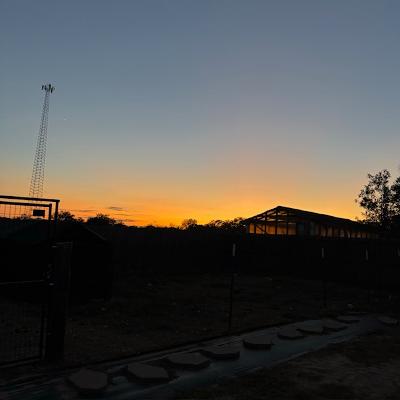 Sunset was at 7pm this evening. I got so busy that I forgot it now gets dark early. At 7:15pm, I ran out, locked the chickens away, & snapped this.
Sunset was at 7pm this evening. I got so busy that I forgot it now gets dark early. At 7:15pm, I ran out, locked the chickens away, & snapped this.I waited all day long for the Amazon driver to come and bring me two important items. He normally shows up in the afternoon. At 9pm, I finally got a notification that my packages were here, in the scary darkness where there are snakes and spiders and who knows what else. I had to walk all the way out to the gate where they were casually dropped over the fence. Fortunately, I made it without getting bitten and without tripping on a rock which is a feat in itself!
Pollinator Garden
Now that you're convinced that pollinators are necessary for a successful garden, let's dive into the basics. A pollinator garden is simply a section of your garden designed with plants that attract and support pollinators. It involves selecting the right plants, providing water sources, and choosing an appropriate location. We'll cover all of these aspects to ensure your garden is an attractive oasis for these tiny marvels.
When should you build a pollinator garden? The best time to start planning is in early spring for most of the country, as this allows you to prepare your garden and plant it when the weather is ideal. However, if you're reading this outside of spring, don’t worry. You can always start small and expand your garden whenever you're ready.
If you live in Texas, you want to plant all wildflowers, including bluebonnets and other Texas natives in October.
Location is key when deciding how to build a pollinator garden. Choose a sunny spot, as most pollinators love warmth. Ensure the area is sheltered from strong winds but receives ample air circulation. Easy access to water sources, like a small pond or birdbath, can also make your garden more inviting.
Let’s talk cost. Creating a basic pollinator garden doesn’t have to
break the bank, especially if you start with seeds or small plants.
While the cost can vary based on size and plant choices, expect to spend
between $50 to $250. With a bit of planning, you can gradually expand
your garden over time. David's Garden Seeds® has a lot of wildflower seeds, Texas native seeds, and many other popular flower seeds.
Remember, pollinators have diverse dietary needs. Some prefer tubular flowers, while others are attracted to daisies or clustered flowers. Pay attention to plant labels or consult local experts to ensure a mix that caters to a wide range of pollinators.
Tuesday, October 22, 2024
Well, good morning. I have been awake for hours and I wish I could have slept. I put up some YouTube videos on yesterday's portion of the page because there are so many Americans who think Kamala is all that is good and righteous. These are people who do not watch the news or keep up with politics.
The deer were out there again this morning, grazing on our seeds...
 My father in the US Air Force back around 1950. I wouldn't come along and make him a father for another 9 years.
My father in the US Air Force back around 1950. I wouldn't come along and make him a father for another 9 years.Thirty-three years ago today, my father passed away. It is hard to believe it has been that long.
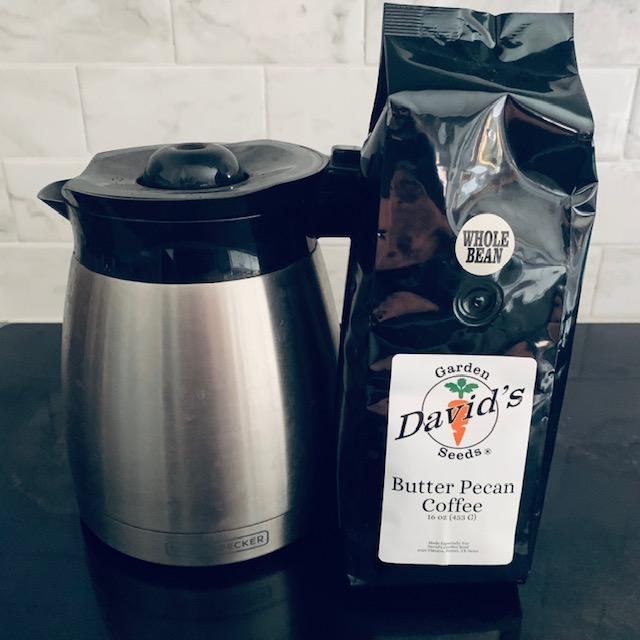
As far as I know, I have lots to do in the store today. We got another shipment of fresh pecan coffee in both ground and whole bean. If you are interested in trying our pecan coffees made here in Texas, you can save 10% now with code SAVE10NOW. I will unpack the coffee and put the new numbers on the website so you can order them today. Just give me a few hours. It is only 7:30am now. Take advantage of this code now. I have four large boxes to unpack. I believe we will have six flavors, possibly more, as I have not yet opened the boxes.
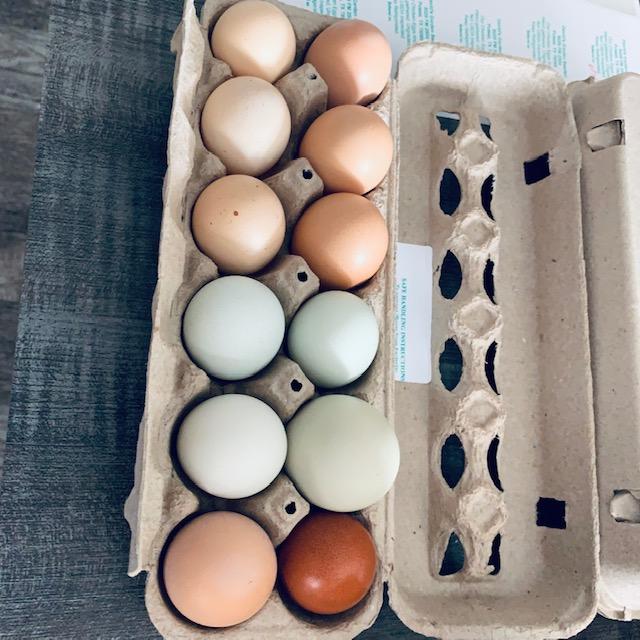 Right now, our eggs are mostly white with an occasional brown or blue egg. Those chickens are molting and not laying much. I think the white laying ones already molted.
Right now, our eggs are mostly white with an occasional brown or blue egg. Those chickens are molting and not laying much. I think the white laying ones already molted.I took Trump out for a quick walk this morning and we fed the fish. At 8:52am, a couple drove in and wanted to shop. We open at 9am. I let them in and took Trump home, grabbed the money and three dozen eggs and headed back for the Farm Store.
When I walked in, there were seven dozen eggs on the counter. I asked them if they wanted three more. They said yes so I am sold out of eggs for the day! Yay!
After that, the day went downhill. I had to call our pretend health insurance company to get one of David's bills paid which they wrongly denied. I spoke with two people this morning and after a fun time of explanation over and over to the second person, he finally saw the light and sent it back to be paid--over $500 in lab tests that his PCP and cardiologist ordered.
Interestingly, they have paid this twice a year every year since we have had the coverage until now. David went back and forth with them several times and they kept telling him no. So I had to call and get forceful. The problem is either their employees are not trained correctly or they are not very intelligent. I paid medical claims from 1981 until 2016 so I know and understand the field very well. Anyway, after over an hour on the phone with two different people, that was resolved.
Then I called again to speak to a third person about me canceling my coverage effective November 1. I clearly stated that I was canceling but David was keeping his coverage and why yet the man I spoke with asked me three times why I was canceling. Then I asked him if my medical bills submitted one month ago had been processed yet. He told me they did not even have them in the system so they would not be paid before my coverage cancels. Wow. Anything to get out of paying a claim, right? These are the people who take four months to pay a claim so we always have to pay our medical bills up front. Yeah, I want my $700, dude.
After that, there were more dealings with other things. I have learned that on so many of these occurrences with people the old saying, "you just can't fix stupid" is true. Sometimes I try and try but it does not work. Today, I realized that pretty quickly. However, I wasn't about to let them not pay that $500 plus bill or let them bill me a premium that I would no longer need. I will probably forfeit the $700...I will just be glad to not have to deal with them anymore. Hopefully, I don't get sick or break something over the next ten days.
I just finished stocking all of the coffee. I now have six different pecan flavors of coffee, available in either whole bean or ground, with a total of 170 bags. My back hurts but I am glad to have it all done. I had to move some other things around to make room for it all.
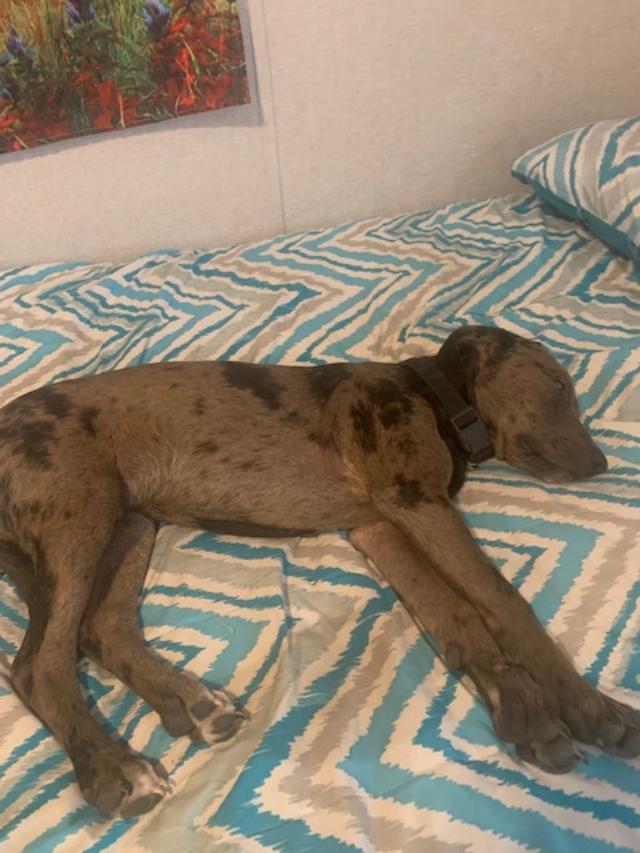 My sweet little Trump is all legs now but still playful and very hyper. This is a rare, sleepy moment that David captured & sent to me on the guestroom bed.
My sweet little Trump is all legs now but still playful and very hyper. This is a rare, sleepy moment that David captured & sent to me on the guestroom bed.I went out to put the animals away around 6:50pm and the clouds were like cotton candy as the sun went down.
Pollinator Garden
Now, let's get into what to put in a pollinator garden. The magic lies in selecting a variety of native plants that bloom at different times throughout the year. This ensures that pollinators have a consistent source of nectar and pollen. Combine annuals and perennials for continuous growth and color.
Start with some classic favorites like coneflowers, milkweed, and sunflowers. These are known to attract butterflies and bees. Lavender, sage, and salvia are also excellent choices that provide both fragrance and food for pollinators.
In Texas, many of the Texas natives come out in early spring. Dandelions also come out fairly early. Most flowers fade once the heat of summer hits. Zinnias stand up to the sun and will grow from early spring until the first frost of the next fall/winter. Sometimes, they turn brown around August but if you plant more, they will grow quickly and keep on feeding the pollinators.
Don’t overlook shrubs and trees. Butterfly bushes
and fruit trees, like cherries and apples, offer both nectar and
shelter. These can add height and structure to your garden while
appealing to pollinators. The cold took out my cherry trees but I have
plenty of apple, peach, pear, and other trees in our orchard.
A key element in how to build a
pollinator garden is diversity. Include a mix of colors, flower shapes,
and plant heights. This variety not only creates visual interest but
also attracts different types of pollinators, ensuring your garden is
buzzing with life.
Layout plays a significant role in the success of your garden. When deciding on the layout of a pollinator garden, use a layered approach. Place taller plants at the back and shorter ones at the front. This makes it easier for pollinators to access the flowers and creates a pleasing visual effect.
Clumping similar types of plants together is another great strategy. This makes it easier for pollinators to find them and can lead to more efficient pollination. Plus, it can create stunning visual contrasts within your garden.
Pathways or small breaks between plant clusters can also be beneficial. They provide easy access for you to observe and maintain your garden, and they give pollinators clear flight paths.
Among the crucial steps in this endeavor, consider incorporating organic gardening practices. Avoid using pesticides and chemicals, as these can harm not only the pollinators but also the plants themselves.
Wednesday, October 23, 2024
Well, good morning. There are cool bands of fog out in the fields again.
I just watched a video that was well researched showing that VP Kamala is actually a Hindu. No wonder she told those folks they were at the wrong rally when they said "Jesus is Lord." She actually has a photo of a black woman in her book claiming that this is her grandmother because her actual grandmother was fair skinned and of Saphardic Jewish descent. Check it out below. In this first video, they think Irish, but it is clarified in the second video. Why is she hiding her background?
Below is the clarification.
So what do you think?
We met a friend for lunch and had a nice visit, then back to work. The sun is bright with no clouds in the sky. It is 3pm and it is 88°. On Saturday morning, I cut a bunch of sweet potato vines from the front garden bed to root. They are growing very nice roots so I will be planting them soon to sell next spring. I also cut some coleus but it has not yet rooted. No more of my Pride of Barbados seeds have germinated yet.
It is now 4:30PM and David and I just got back from voting. There were quite a few cars but the line moved very quickly and we were in and out in about ten minutes. The ballot for us was just three pages long.
Pollinator Garden
Opt for natural fertilizers like compost or manure. These enrich the soil without introducing harmful substances that could deter or harm the pollinators you’re eager to attract.
Adding a water feature, like a shallow dish with stones, gives pollinators a drinking spot. Make sure the stones are slightly above the water so they can land safely. This small detail can make your garden even more attractive to visiting insects and birds.
If you're short on space, consider vertical gardening. Wall-mounted planters or trellises with climbing plants like honeysuckle or clematis can be both space-saving and pollinator-friendly.
Let's not forget shelter! Pollinators need places to hide from predators or harsh weather. Providing a brush pile, small rock garden, or bee house can significantly enhance your garden's appeal and function.
If you're curious about how important it is to the gardener to have a pollinator garden, the answer is immeasurable. Not only do pollinator gardens support biodiversity, but they also bring a sense of peace and joy as you watch these creatures flourish because of your efforts.
Thursday, October 24, 2024
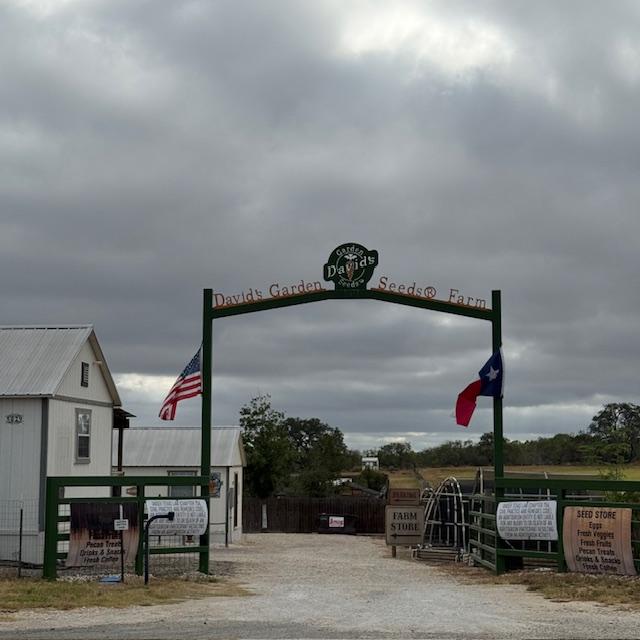 I took this photo of the gate this morning. We have new flags & a new paint job. Looks great! This is what you see from the road.
I took this photo of the gate this morning. We have new flags & a new paint job. Looks great! This is what you see from the road.Good morning again! The sky is very cloudy as the darkness disappears. There is no chance of rain. We sure could use some. I have a lot to do this morning and I need to get going.
I built four pages today after filling the few orders I had. It is sort of strange how the orders have come to a stand still while everyone votes. Do you have enough garden seeds for next spring if there is a SHTF situation in November?
We had zero customers come by today which is fairly typical for a Thursday in the fall plus it was really hot again. It got up to 92°.
My sweet potato vines are rooting nicely and I will be able to plant them as soon as it is cool again. I cannot stand being out there getting hot and sweaty when I have to go wait on potential customers.
Matt picked the first green beans of the season. I snapped the ends off and cooked them for dinner along with keto meatloaf and some rice. They were so delicious! We enjoyed watching Hell's Kitchen this evening. Gordon did not send anyone home since three people went home last week. One guy tried to go home because he missed his kids but Gordon talked him out of it. I hope he wins it because the others are just plain nasty and nasty looking. I would not want any of them to cook my food.
After Gordon, we started watching Dallas. We got through the first episode from 1978. So fun! I used to love that show back when I was young.
Pollinator Garden
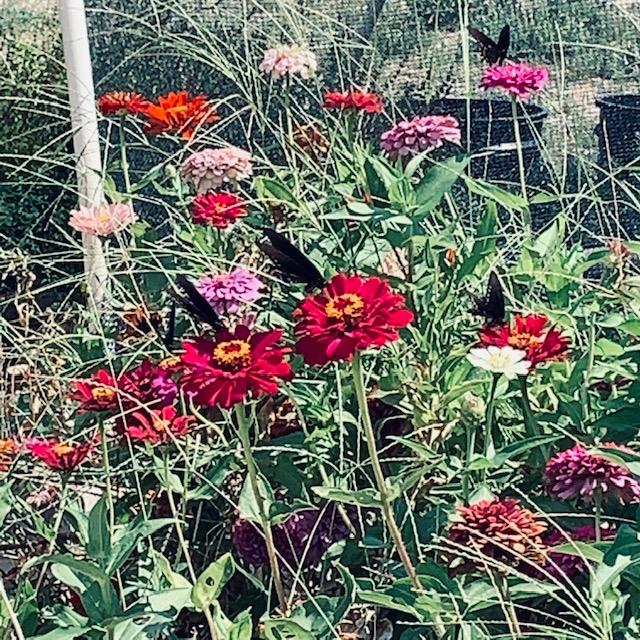 There are always butterflies around our farm because there are always flowers. Zinnias are a favorite here.
There are always butterflies around our farm because there are always flowers. Zinnias are a favorite here.Growing your pollinator garden from seeds can be rewarding. It’s budget-friendly and allows you to select a wider variety of plants. Start seeds indoors before the last frost, then transplant them once they're strong enough.
Alternatively, purchasing young plants from a local nursery can give you a head start. This approach often leads to earlier blooms and is a great way to quickly see the fruits of your labor.
Growing milkweed is particularly important
as it’s the host plant for Monarch butterflies. Adding these to your
garden can help in the conservation efforts for these beautiful
creatures. I would like to add here that each year the monarchs hit our
farm during migration. We do not have one milkweed plant on the
premises, yet they are all over the flowers and plants we have here,
laying their eggs which turn into caterpillars.
Shade-loving plants, like ferns and hostas, can also be included in less sunny areas of your garden. These can attract pollinators like hummingbirds, which love cooler spots too.
Herbs like basil, rosemary, and thyme are double-duty performers. They attract pollinators and can be used in the kitchen. It’s like flavoring your meals with a touch of the garden's life!
As your garden grows, remember to deadhead spent flowers. This encourages more blooms and keeps your garden looking neat while continually providing food sources for pollinators.
Sharing your pollinator garden journey with friends or on social media can inspire others to create their own. It's a wonderful way to spread awareness and join a community of eco-conscious gardeners.
Caring for your pollinator garden can become a delightful routine. As you tend to it, enjoy the sights and sounds you’re fostering. You’ll likely notice an increase in pollinators visiting each year.
Keep a garden diary to track which plants thrive and which ones the pollinators prefer. This can be useful for future planting decisions and remembering what worked well.
During the fall, consider leaving some garden debris like fallen leaves. They provide overwintering spots for beneficial insects, contributing to the next season's ecosystem.
As you prepare your garden each spring, keep expanding it with new plant varieties or features. This continual evolution will keep your garden vibrant and captivating.
Friday, October 25, 2024
Good Friday morning! I made an egg casserole. It came out so good. It got light and there is a lot of fog out there. Matt said he had a hard time driving to the farm this morning because of the fog. He finally got here just in time for the egg casserole and enjoyed it.
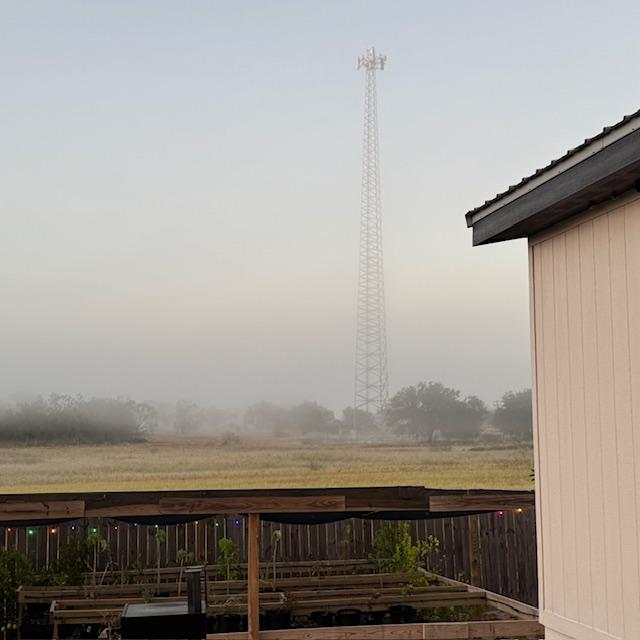 The fog looks really good by the cell tower. I did not see any deer in the field this morning eating pollinator garden seeds.
The fog looks really good by the cell tower. I did not see any deer in the field this morning eating pollinator garden seeds.David and I had to run some errands in Pleasanton. While we were there, we got some new company shirts as they were finally ready. They look good.
We had to mail an order overnight at the post office as this is the third attempt to get an order right. It was for 2,000 seeds and someone sent 200 onion seeds. We got it right but it cost us an extra $32 to mail it for the third time. That is ridiculous. So we lost money on this sale. You have to be careful and read the numbers on each order.
We also got some groceries while we were gone. I got back and there were customers so I went over to the store to relieve Matt.
Pollinator Garden
Your pollinator garden is a testament to the power of small actions making a big difference. Each visit from a bee or butterfly is a reminder of the positive impact your garden has on the environment.
As you continue to explore how to build a pollinator garden, don’t hesitate to experiment with different plant combinations. This ensures diversity and keeps the garden experience fresh and inspiring.
Engaging children in the gardening process can be incredibly rewarding. It teaches them about the importance of pollinators and instills an appreciation for nature.
You might even consider adding educational signs around your garden to inform passersby about the different plant types and the pollinators they attract.
Having a bench or sitting area in your garden can turn it into a personal relaxation spot where you can enjoy the beauty and tranquility you’ve helped create.
As you become more experienced, sharing your knowledge by hosting garden tours or workshops can help others learn how to build a pollinator garden.
Explore and integrate scented plants like jasmine or sweet alyssum. Their aroma can enhance the garden's appeal for both pollinators and humans.
Practicing mindful watering, only when necessary, can encourage plants to grow strong roots and help conserve water—an essential part of sustainable gardening.
Consider installing a rain barrel to collect rainwater, which you can use to water your pollinator garden. This sustainable practice also helps reduce your water bills.
Saturday, October 26, 2024
Good Saturday morning. It is still dark out. All of the indoor animals are fed but soon I will have to go out and feed and water everyone outside and then open the store for some sales.
Here it is almost 1pm and we still have not had a single customer today. I realize it is the Saturday before Halloween. Many are out shopping for costumes. Others are getting ready for Halloween parties this evening. Every year at this time, business goes way down. Also, there are another ten days until the presidential election--the most important election of my lifetime. Many are out buying prepping supplies just in case the unthinkable happens and Kamala wins. Don't forget that you will need seeds for winter and spring planting.
Well, right after I typed the above paragraph, a van drove in with a mom and four kids. They used to come here quite a bit but have not been here in a year. They bought three items and stayed for almost an hour. The mailman came but I did not have all of the orders done so I have more that will go out on Monday.
Now it is time to go in the house and start my weekend, however short it always is.
It is now 5:40pm. I have fed all of the animals, indoors and out. I am preparing a nice steak dinner with garden fresh green beans. I will also be baking a pumpkin pie as soon as I get it put together. I have not had pumpkin pie in a long time. 'Tis the season!
I got a new book on sourdough bread making. I started reading it this afternoon. Maybe I will make a new starter. It has been quite a while since I've made a loaf of sourdough. Sounds so good.
Well, I will get started on dinner. We will be watching Sven tonight for a scary Halloween type double feature. Have a great evening.
The food was delicious and the original Invaders From Mars from 1953 was quite entertaining. We enjoyed it. The steaks were grilled to perfection. The garden fresh green beans were so tasty. If you didn't plant fall green beans, you don't know what you are missing. We always get our best green beans in the fall. David made jalapeno poppers and they were so hot! I don't think I have ever had such hot jalapenos but they were good! The pumpkin pie was pretty good as well!
Pollinator Garden
As you progress, recognizing the different pollinators that visit your garden can become a fascinating hobby. You’ll soon spot regulars and learn their unique behaviors.
Safety can also be a consideration. If working in areas with many bees, make sure anyone allergic carries the necessary medical supplies just in case.
Joining local gardening clubs can provide support and inspiration from fellow gardeners who share your passion for pollinator-friendly spaces.
Plant swap events can be a cost-effective way to diversify your garden. Swapping plants with other gardeners can introduce new varieties to your collection.
Keeping your garden plans flexible and open to change allows it to evolve beautifully, adapting to new challenges and expanding your enjoyment.
Consider how your garden fits into the larger
environment. Prune and train fruit trees or climbing roses to enhance
fences, which can contribute to neighborhood beauty. This is called espalier.
Envision your pollinator garden as part of a larger movement towards more sustainable and eco-friendly gardening practices. Each plant contributes to a healthier planet.
Sunday, October 27, 2024
Good Sunday morning. It is still dark and quiet, which I like. Soon I will need to go out and feed everyone again.
I find it interesting that the man from Monday who demanded to know who I was voting for never responded back to David. That is right, folks. When you use our official company email, you won't get a response from me unless David passes it along for me to handle. Once in a while, that happens. The top dog reads every email first and he answers most of them. It is provided so you can bring real concerns that you have, not who I am voting for. Remember, it is David's Garden Seeds®, not Juanita's Garden Seeds. This website is an add on started over five years ago when we bought the farm. It is complementary to the company website. The company has been around for over 15 years now.
I just hate that someone is trying to intimidate me into voting their way over an order. There isn't enough money in the whole world to buy my vote. We are not that shallow. We vote our beliefs and if you do not want to order from us, that is fine. We will be fine. God will take care of us, just like He always has. It's too late now anyway because I already voted. Ha!
Pollinator Garden
Remember to take time to simply enjoy your garden. The serene sounds and bustling life can be a relaxing respite from everyday stress.
Seasonal changes will affect your pollinator garden, but each season brings its own unique beauty and opportunity to observe different pollinator species.
Learning to identify the needs of your pollinator garden lets you support its growth—whether that’s more sunlight, water, or plant diversity.
Connecting with other gardeners online can lead to valuable exchanges of tips and experiences, helping you refine and enhance your garden's design.
Give back by swapping seeds with friends or donating them to community projects. This simple act helps spread the importance of how to build a pollinator garden.
Your pollinator garden is a sanctuary, both for you and the creatures it attracts. It can become a cherished feature of your home landscape, offering endless enjoyment.
In the grand scheme, every flower planted makes a difference. Your choices and efforts help sustain the planet for future generations of plants and pollinators.
By cultivating a pollinator garden, you contribute to a legacy of environmental stewardship, showing how each of us can make the world a little bit better.
Now that you’ve got the knowledge and inspiration, it’s time to get your hands dirty. Dive into this rewarding endeavor, and watch your pollinator garden blossom into a vibrant paradise. Happy gardening!
Return from Pollinator Garden to Our Sixth Year
Anything To Share On This Topic?
Would you like to share additional information about this topic with all of us?
Since 2009, over 2,000,000 home gardeners, all across the USA, have relied on David's Garden Seeds® to grow beautiful, productive gardens. Trust is at the heart of it. Our customers know David's Garden Seeds® stocks only the highest quality seeds available. Our mission is to become your lifetime supplier of quality seeds. It isn't just to serve you once; we want to earn your trust as the primary supplier of all of your garden seeds.
Watch Our 2022 TV Commercial!
Sing Along To Our Jingle
♪♫♪♪ ♫ ♪ ♫♪♫♫
♪♫♪♪♫♫
Peppers and peas
And lots of yummy greens
You can't go wrong
With Squash This Long
At David's Garden Seeds
♪ ♫ ♪ ♫
Our New 2024 TV Ad
Please like and subscribe on YouTube and come visit us at our Farm Store! The music on our TV ad was written, played, and sung by our son, Matthew Schulze. You can meet him when you come to the farm. He just might give you a tour. Ask him to grab a guitar and sing our jingle that he wrote.

We are David's Garden Seeds®. If you need great seeds, we've got over 1,400 varieties to choose from.
Subscribe To Mrs. David's Garden Seeds® Newsletter For FREE!
Find out what is going on down on the farm by reading our blog and by subscribing to our free newsletter for all of the information going down at David's Garden Seeds® and on the farm. I love to share helpful information with you. Please let your friends know and y'all come on down for a visit when you get the chance. We would love to meet you!
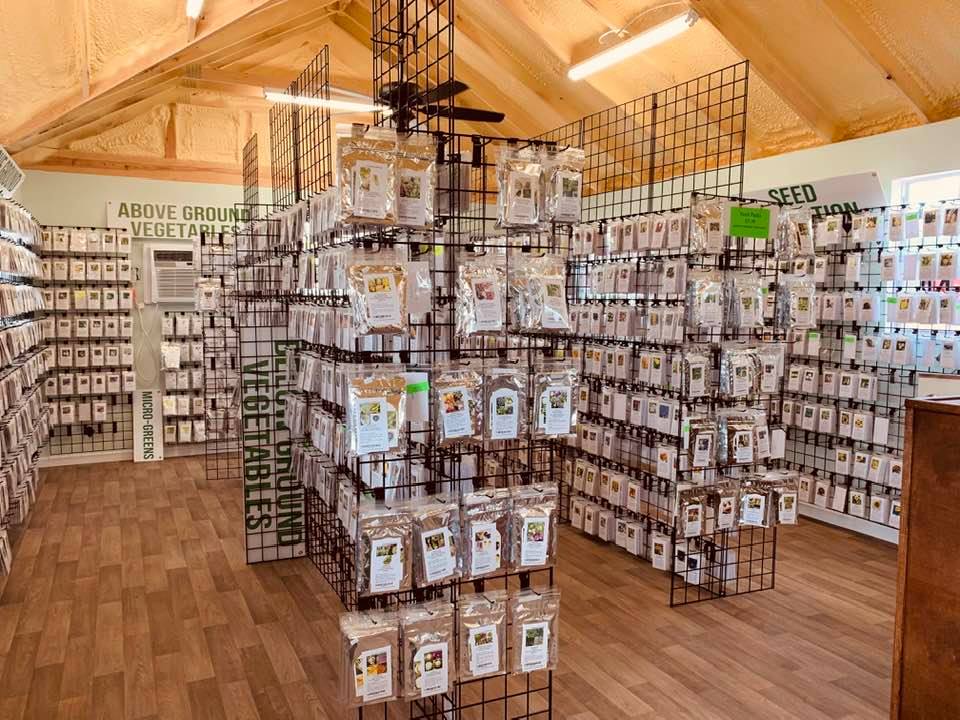
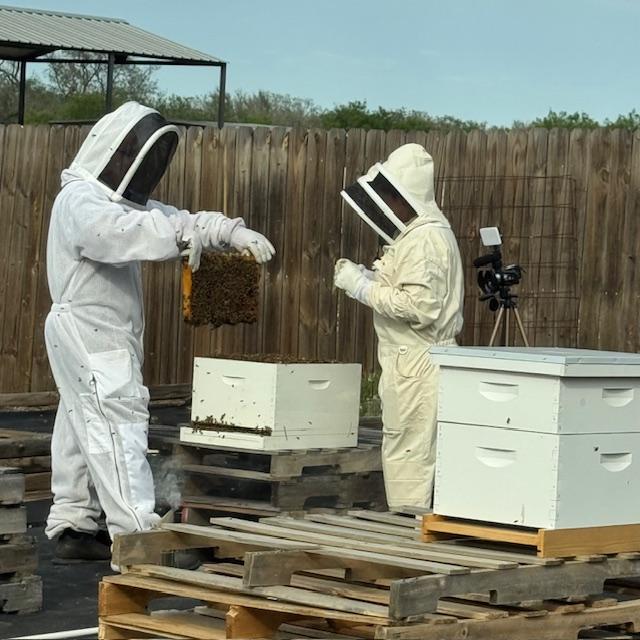 Our bee hives
Our bee hives Our fish pond
Our fish pond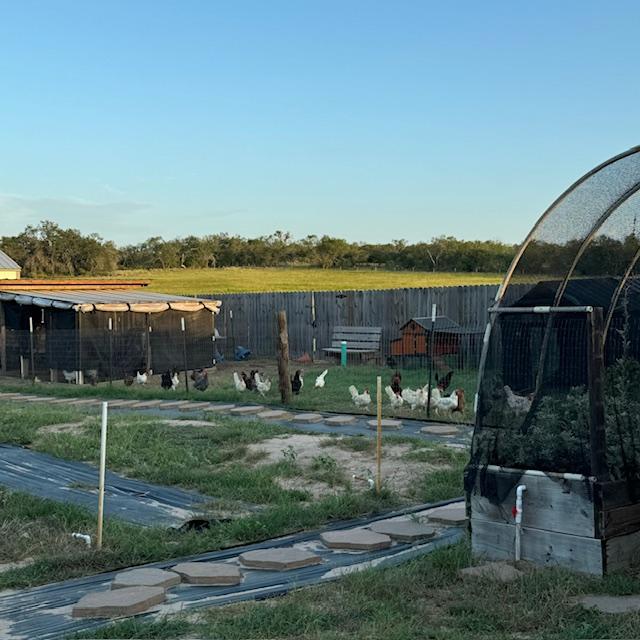 Our chickens
Our chickens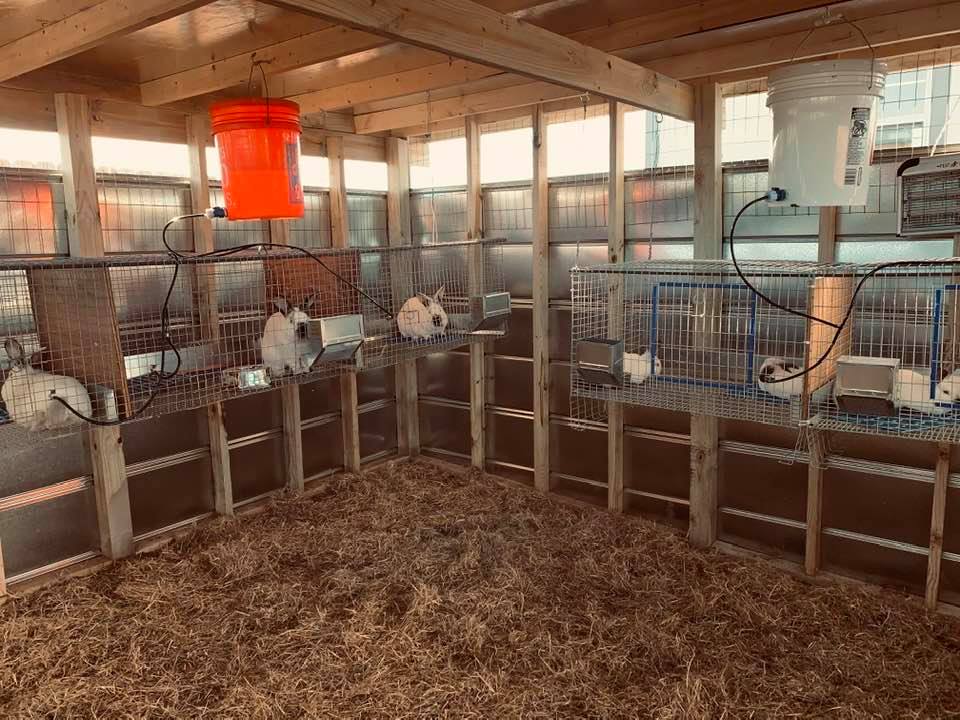 Our bunny rabbits
Our bunny rabbits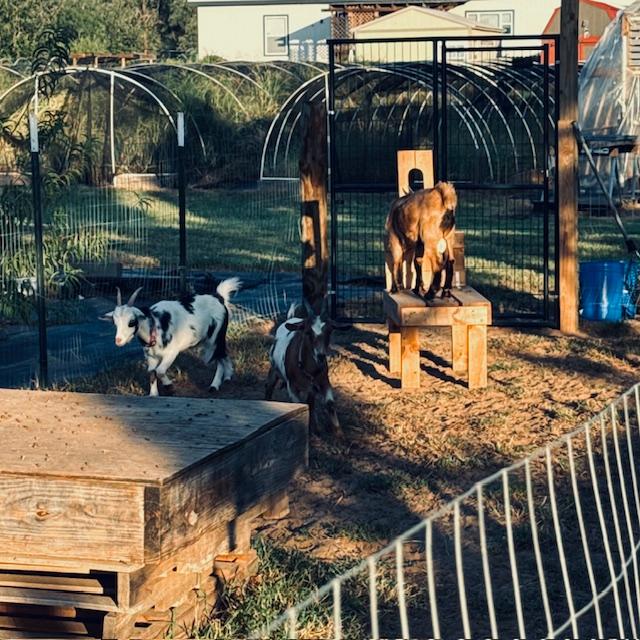 Our Nigerian Dwarf goats
Our Nigerian Dwarf goats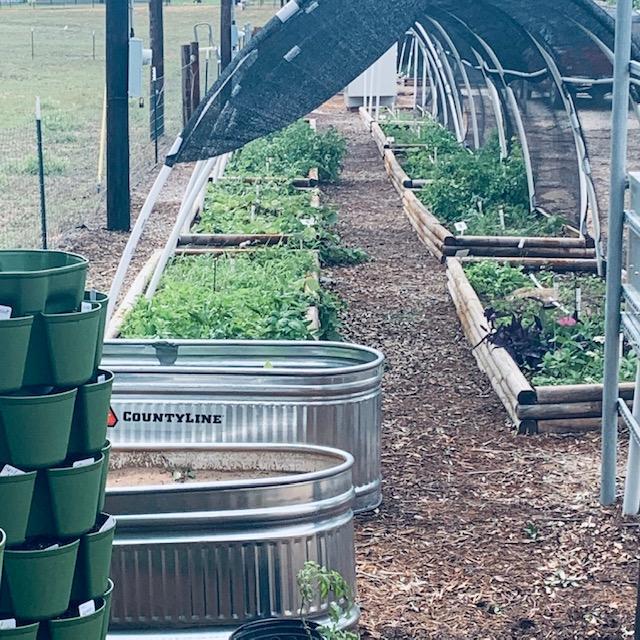 A few of our raised garden beds
A few of our raised garden beds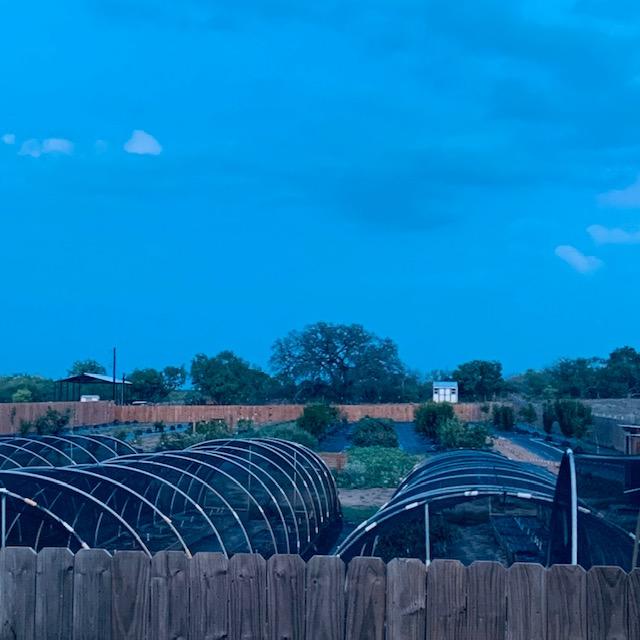 Our orchard and hoop houses
Our orchard and hoop houses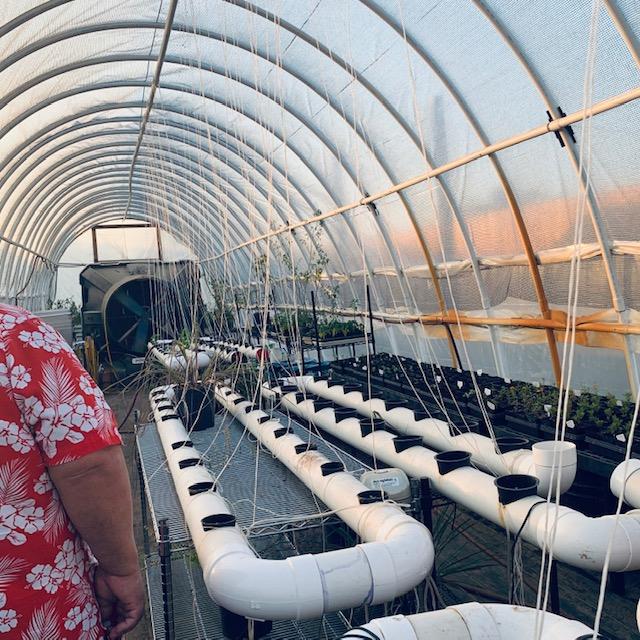 Inside our high tunnel
Inside our high tunnel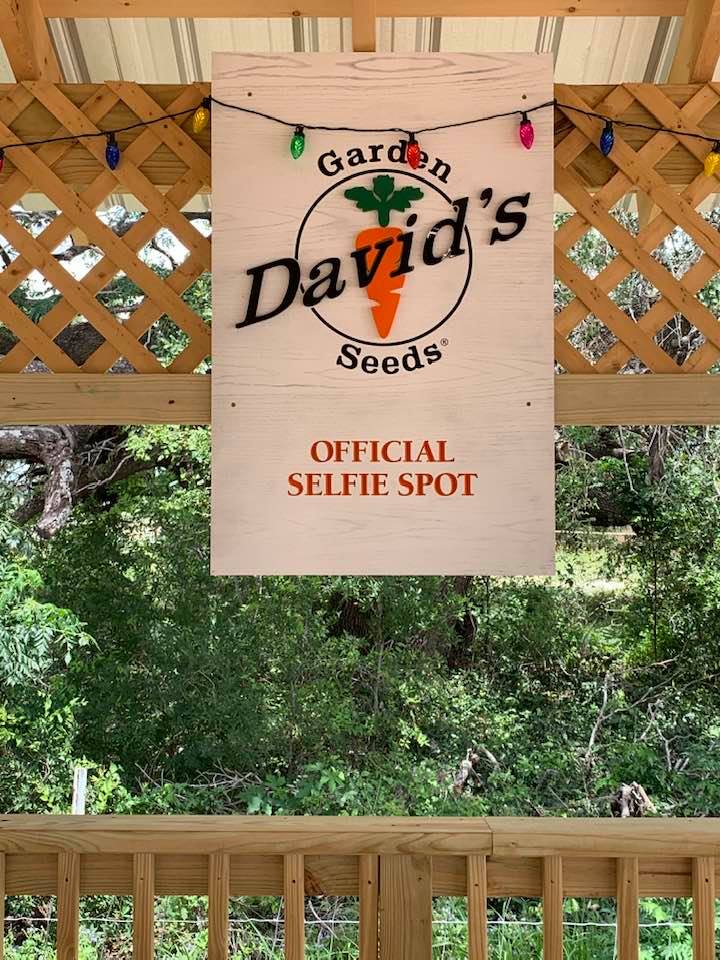 Take a selfie at our official selfie spot!
Take a selfie at our official selfie spot! Flowers, bees, and butterflies are everywhere!
Flowers, bees, and butterflies are everywhere!